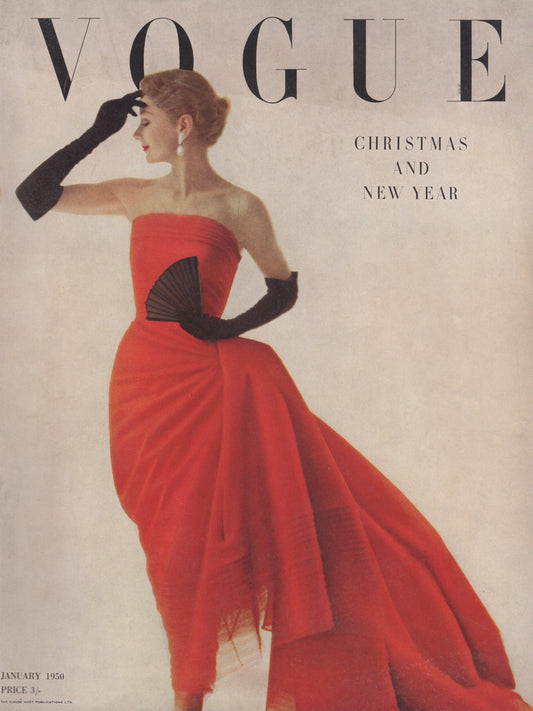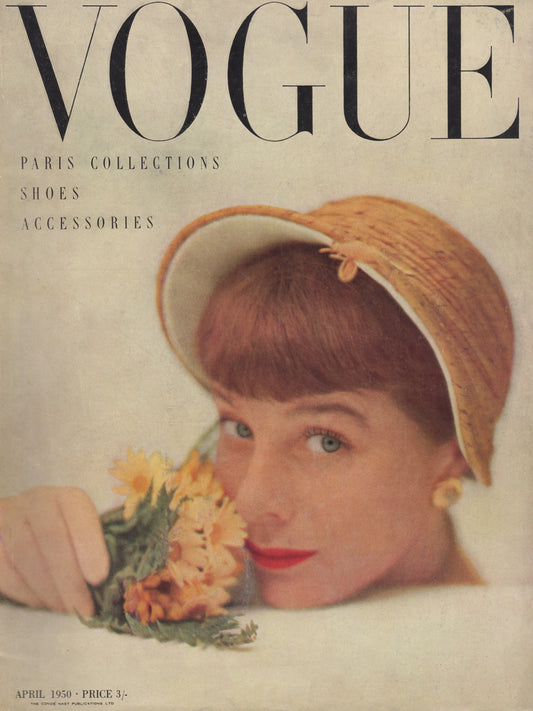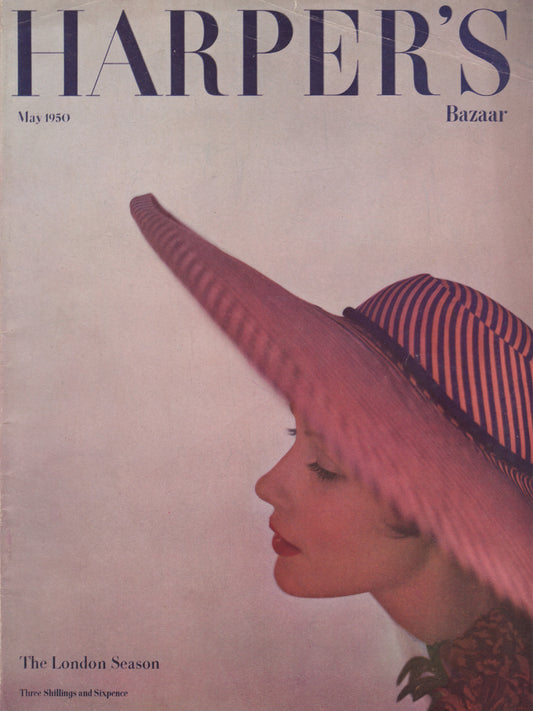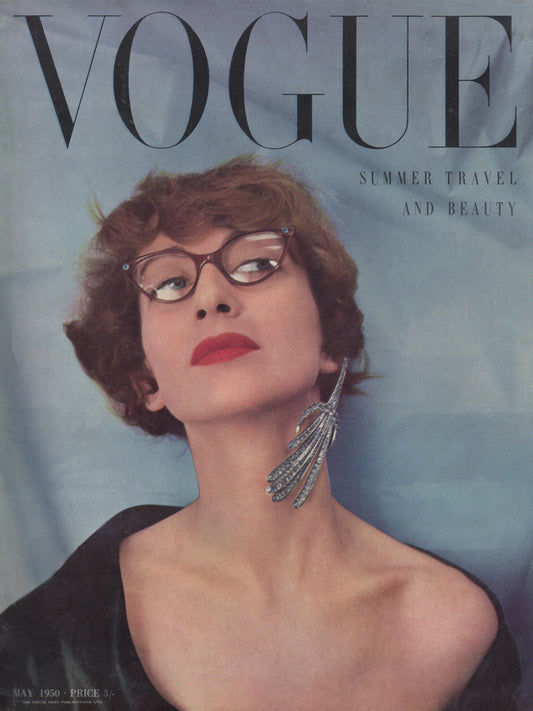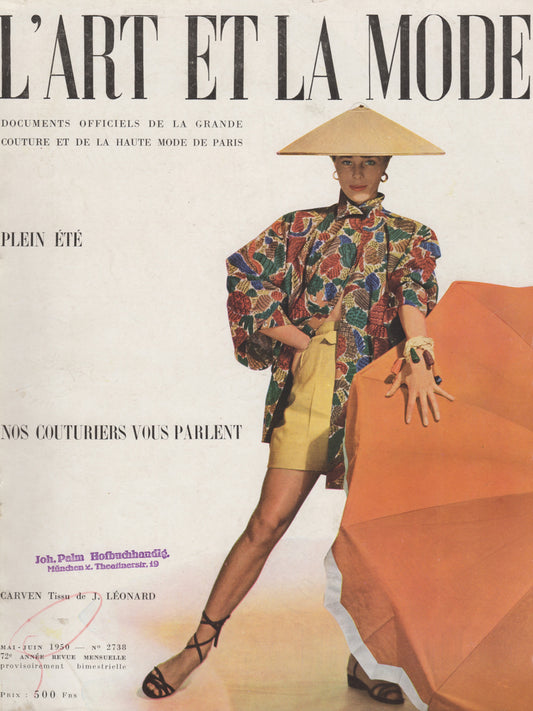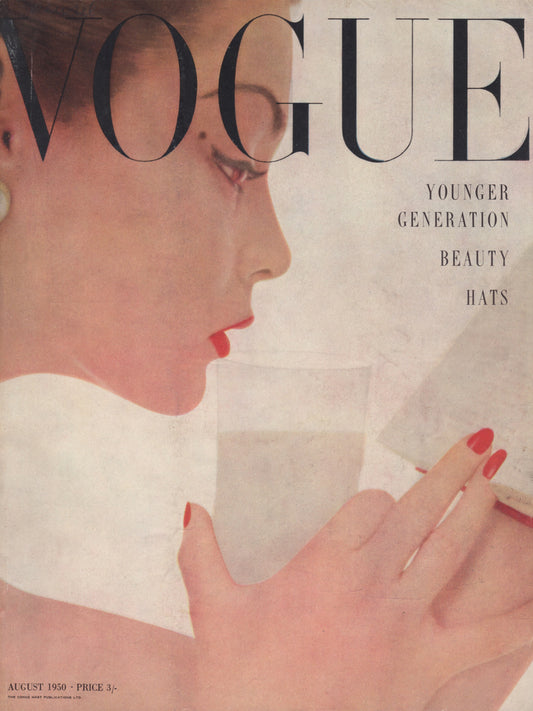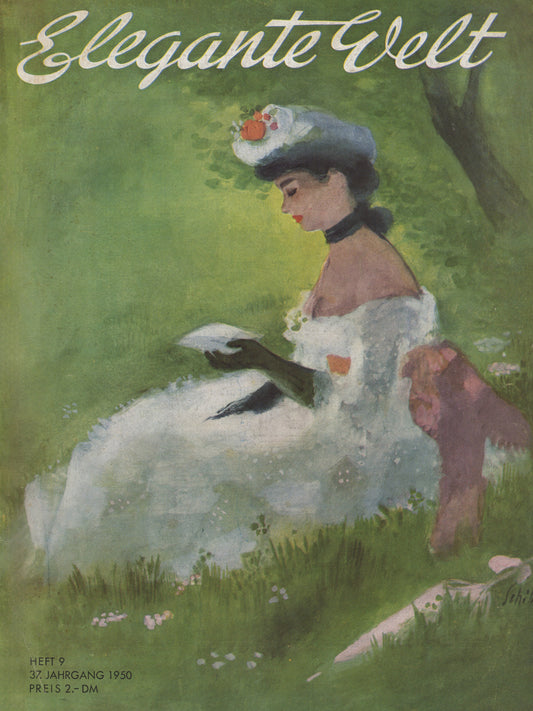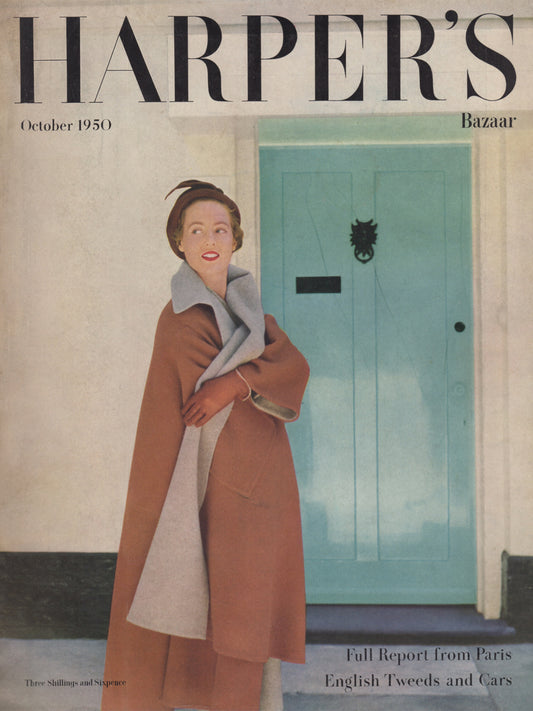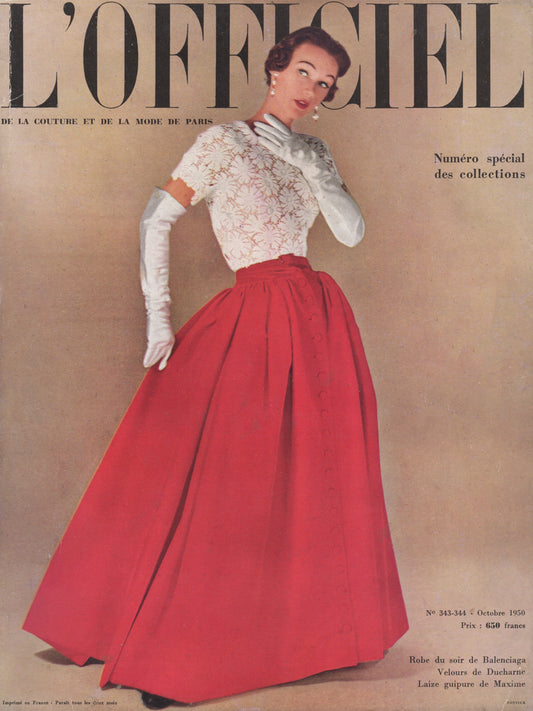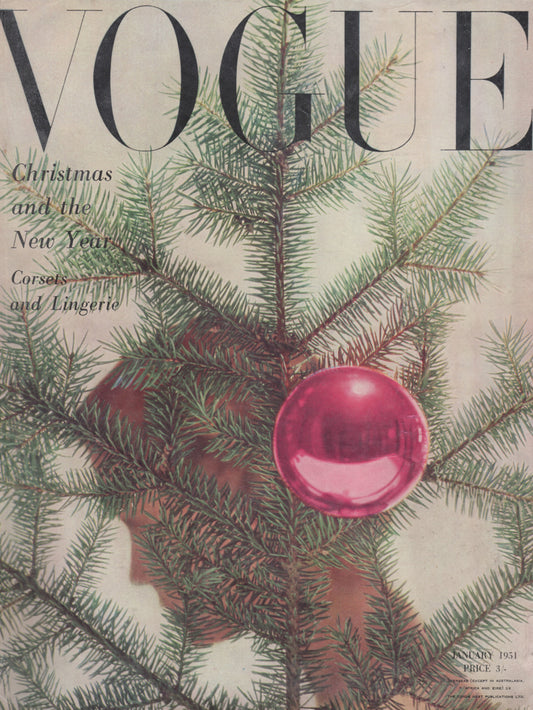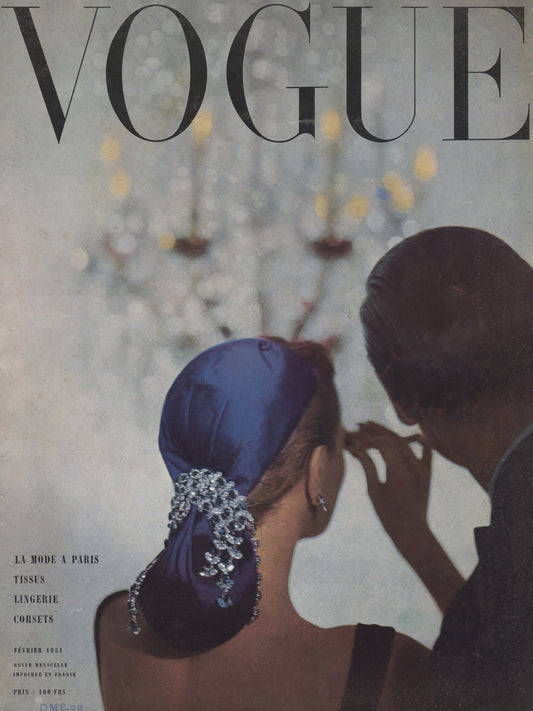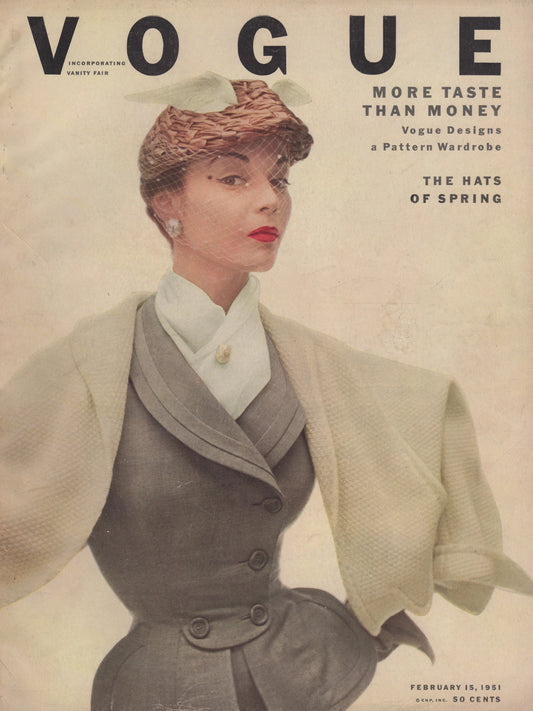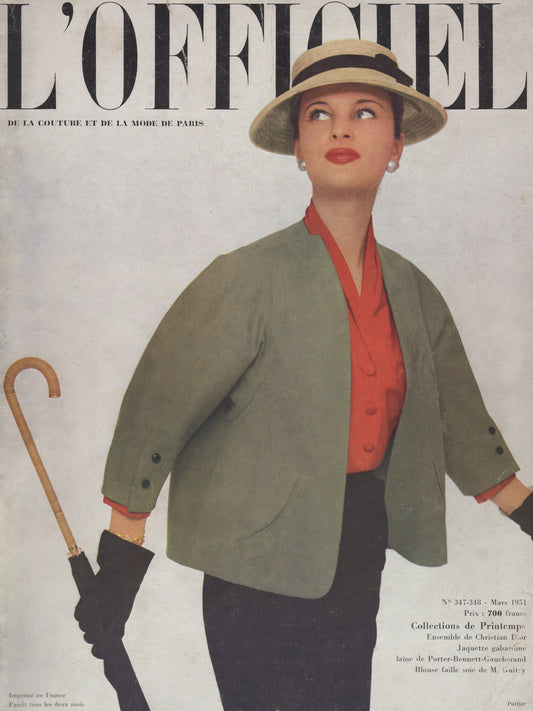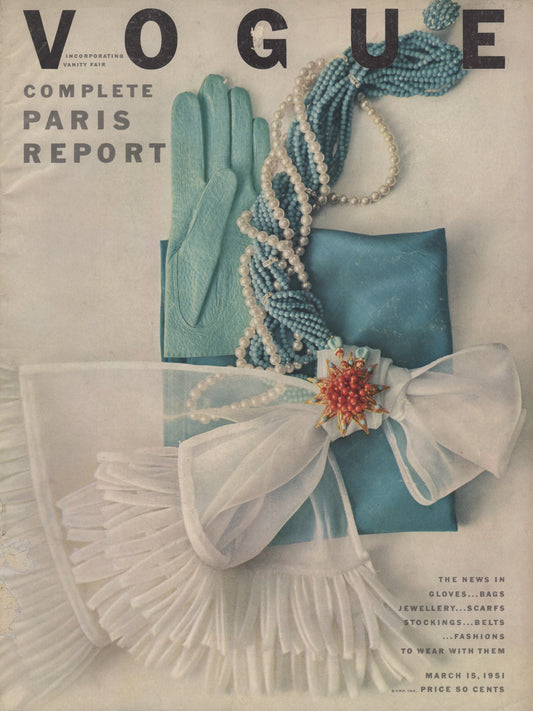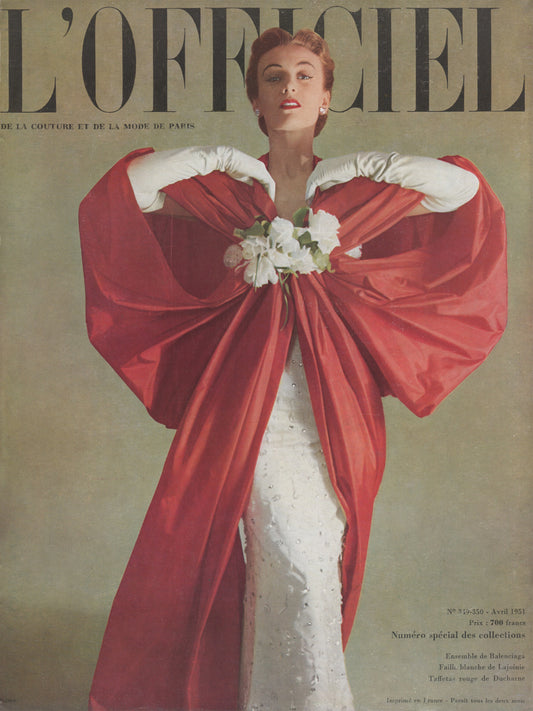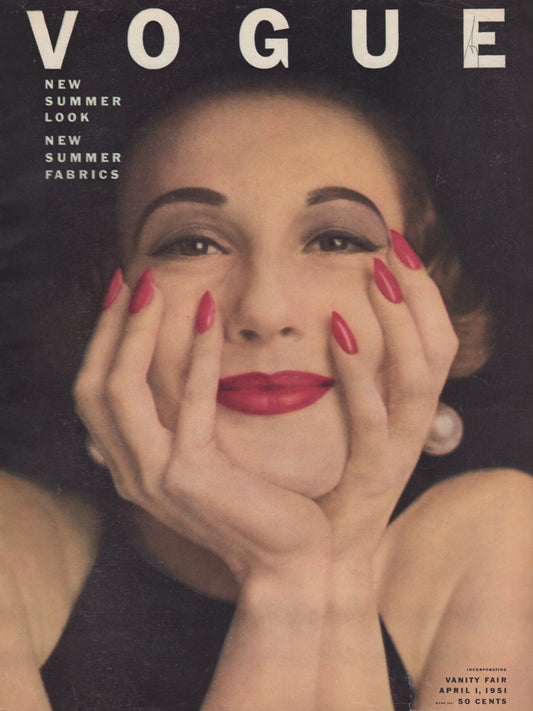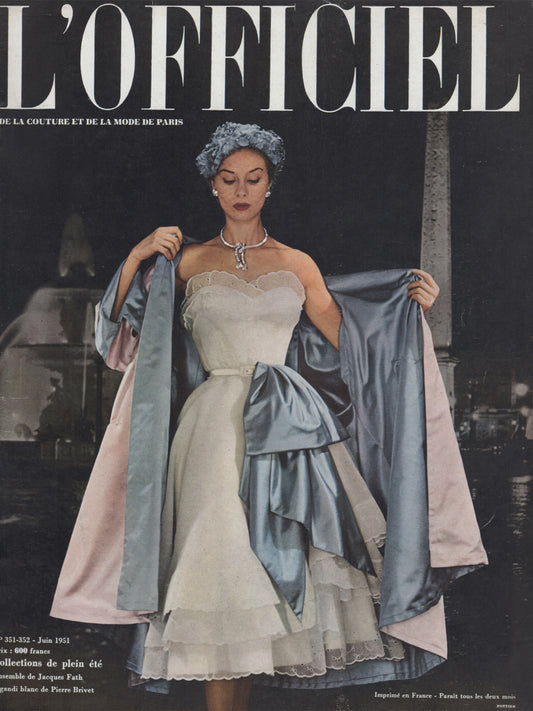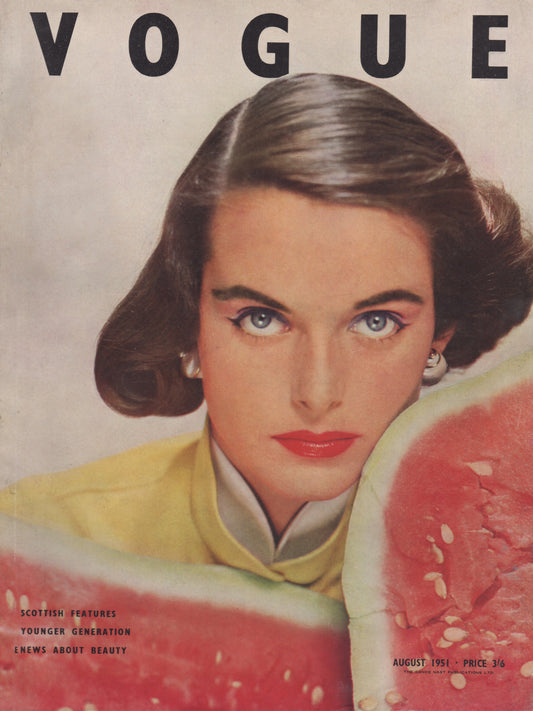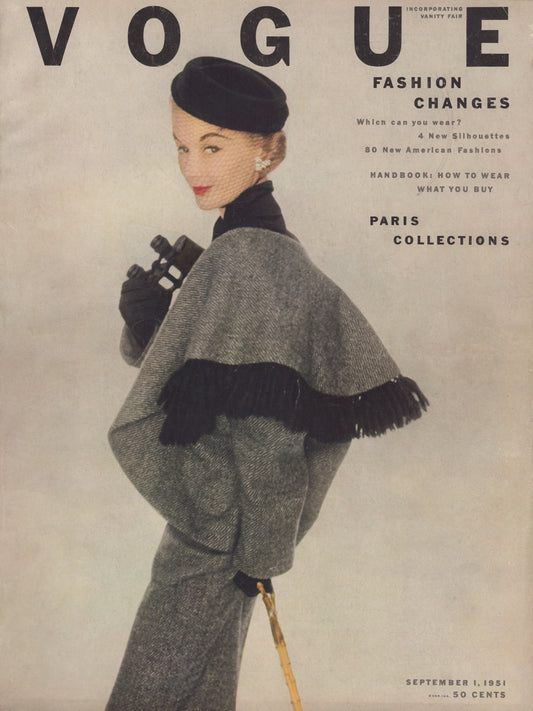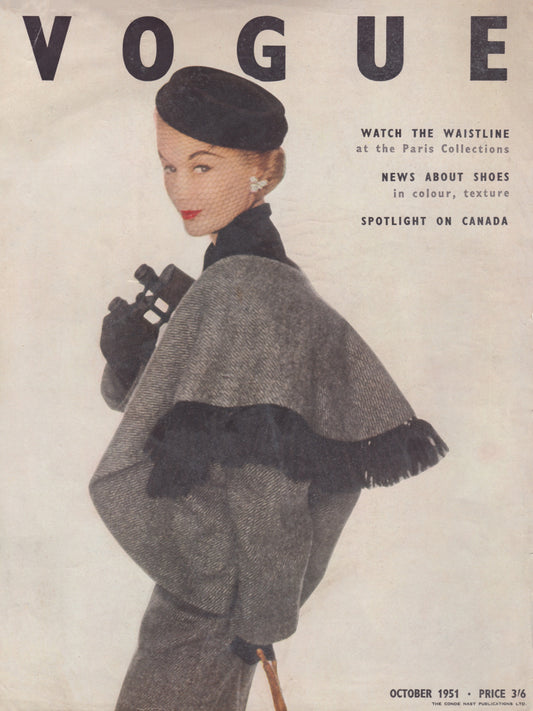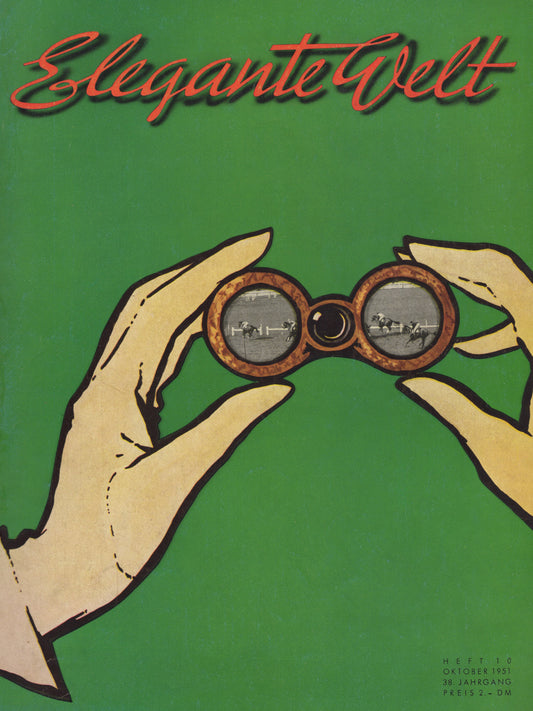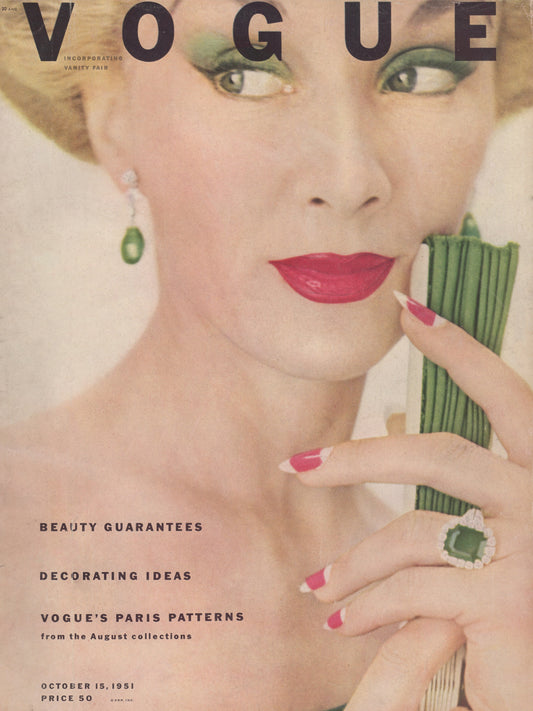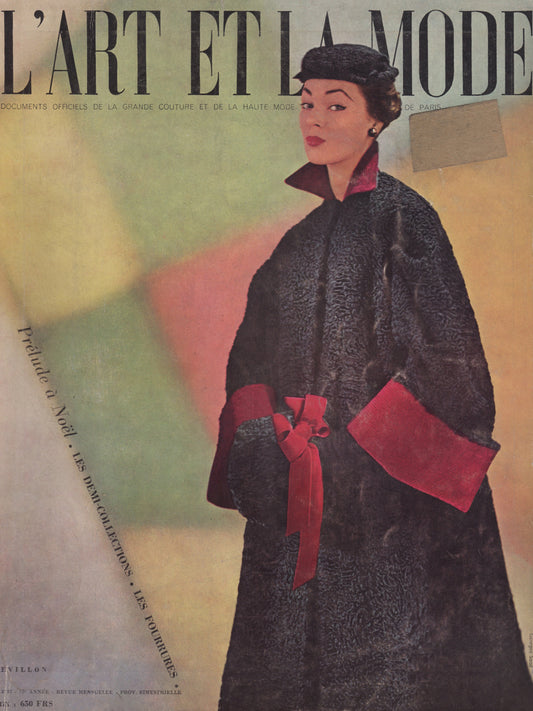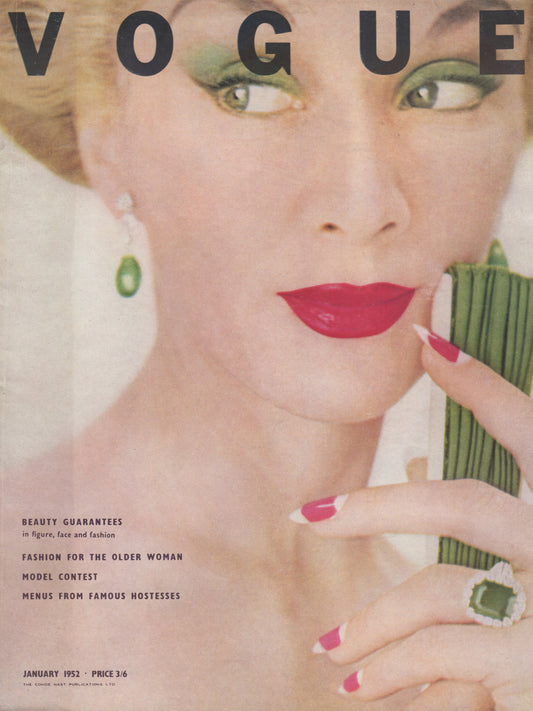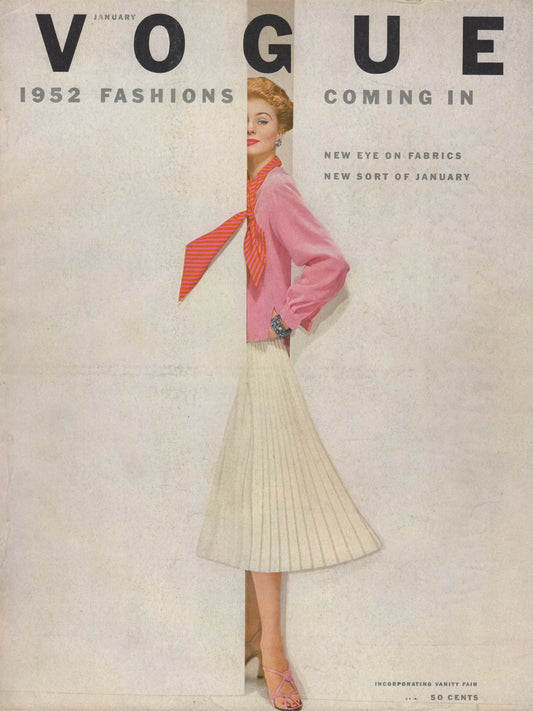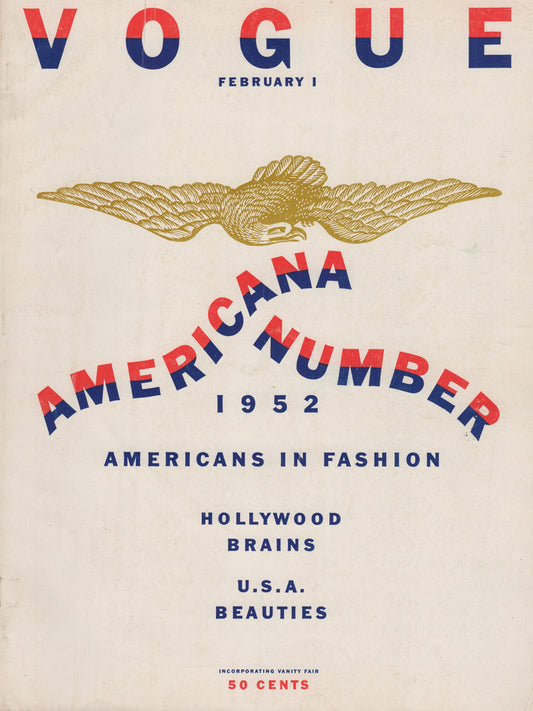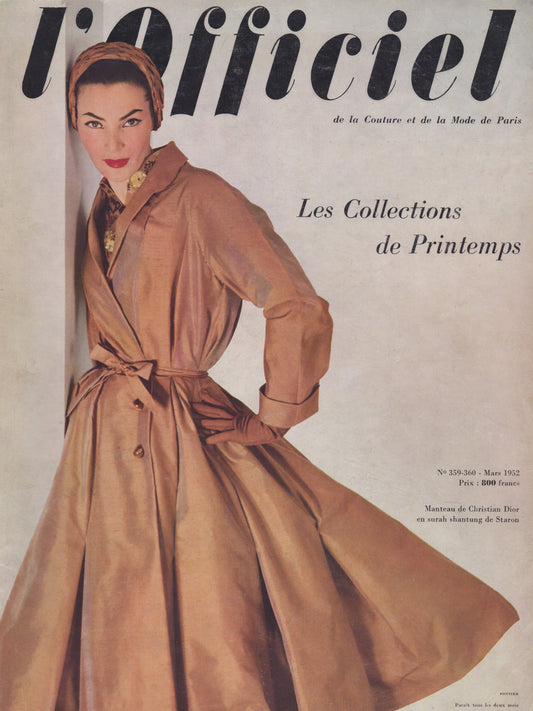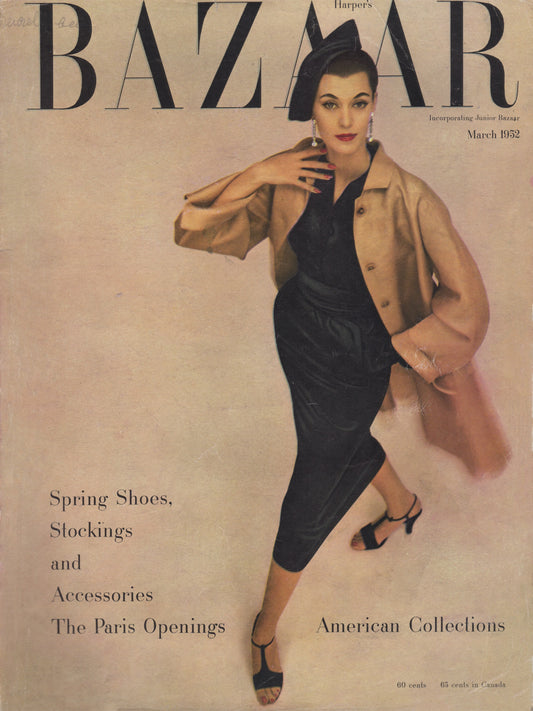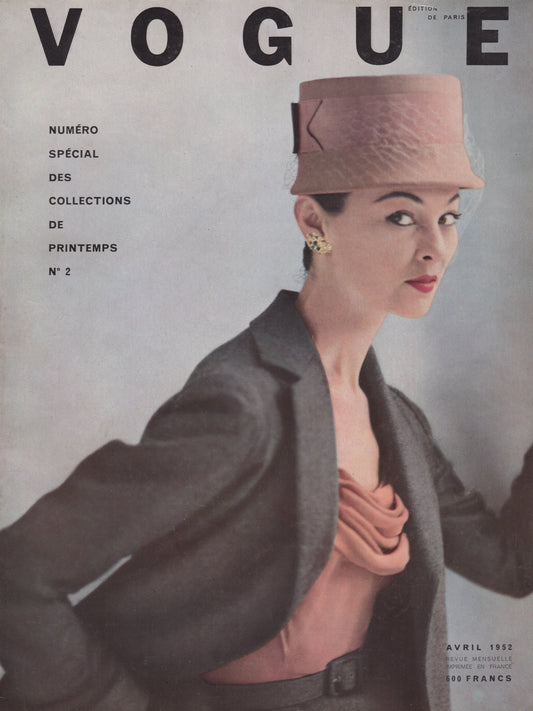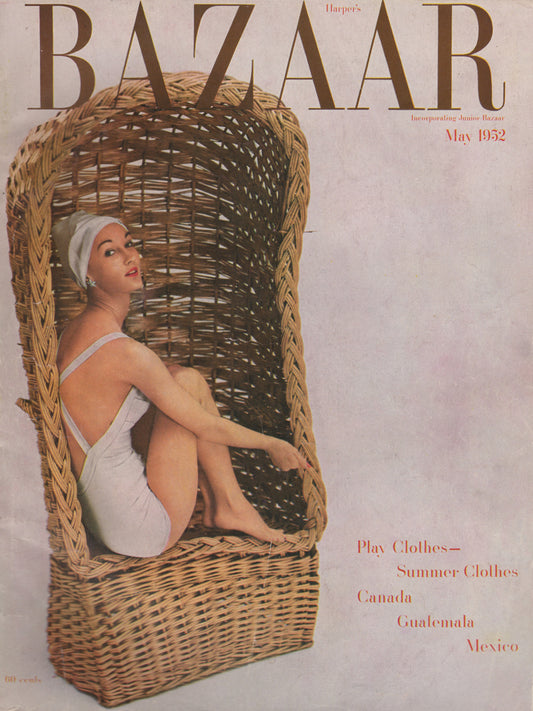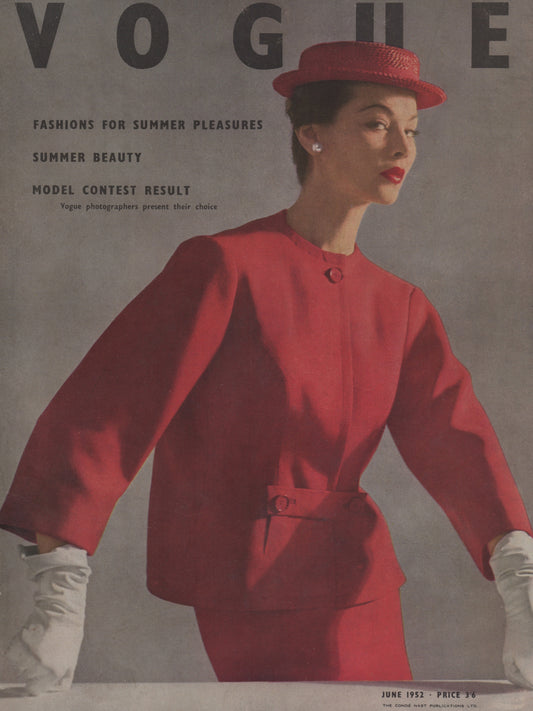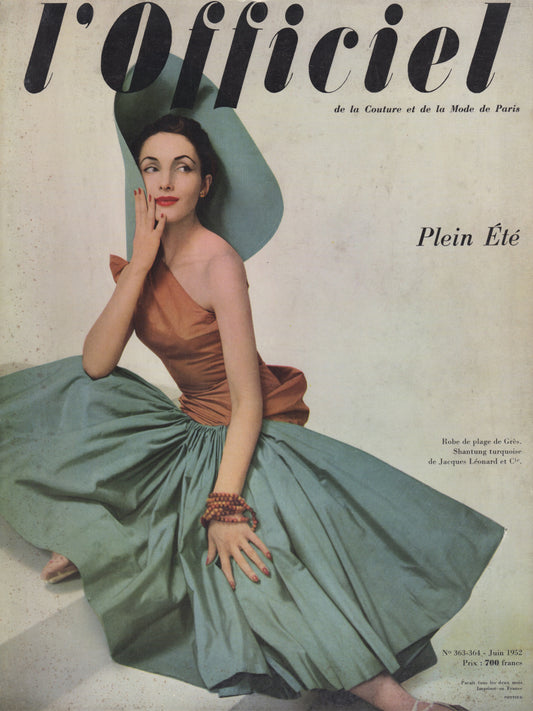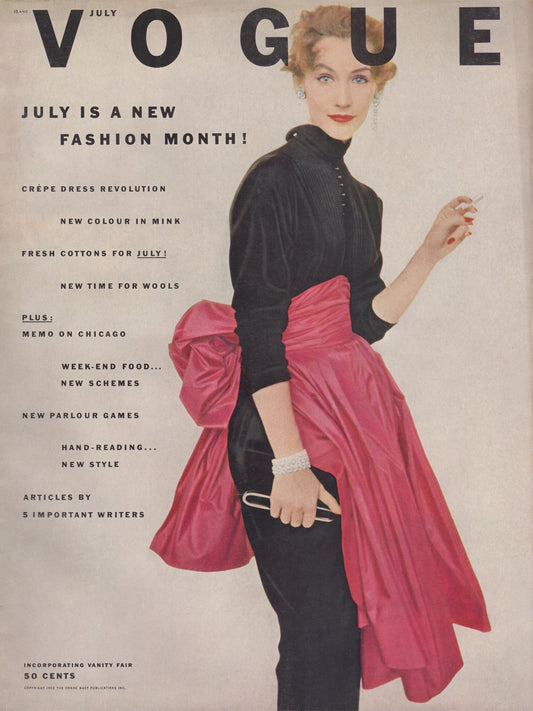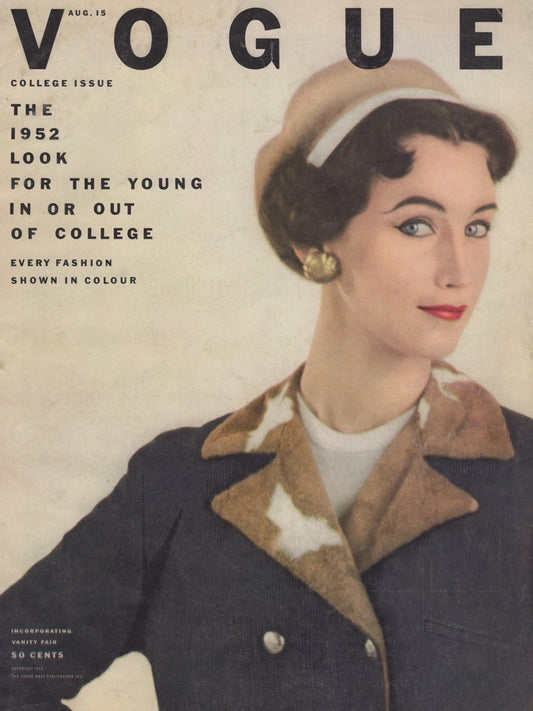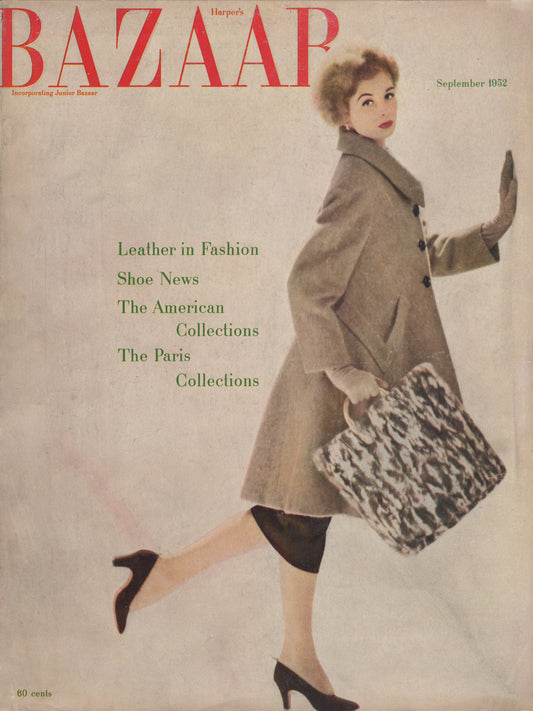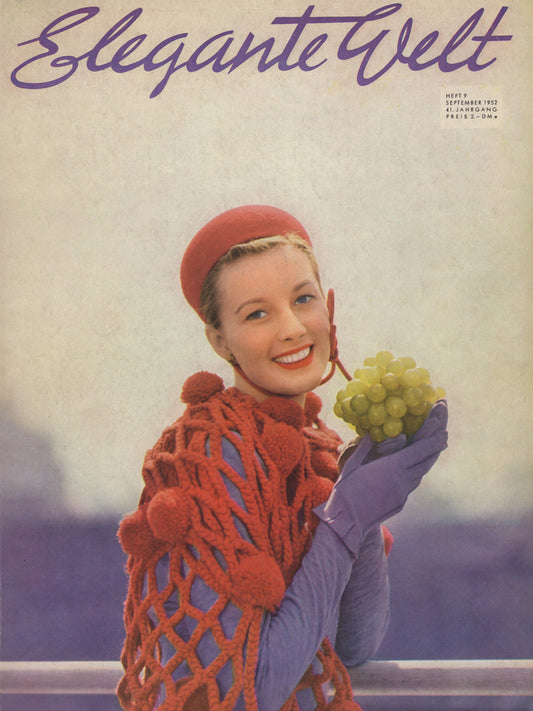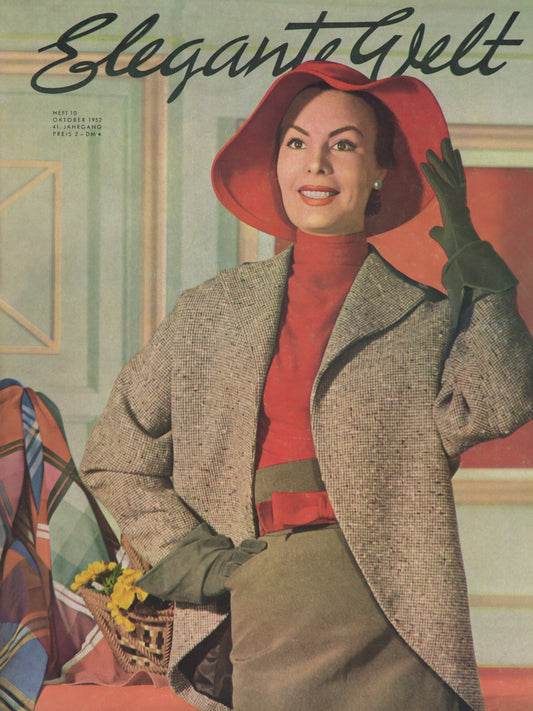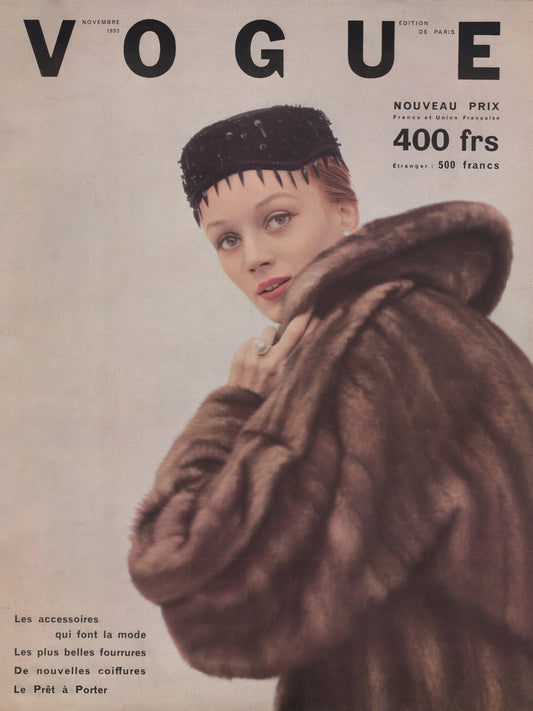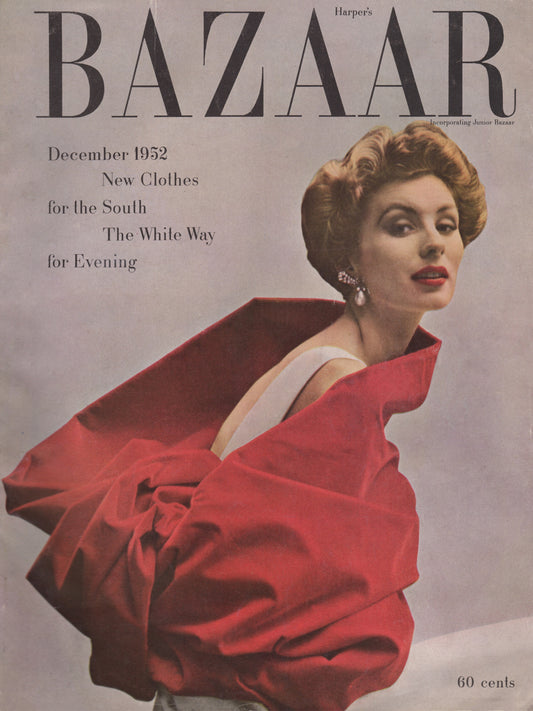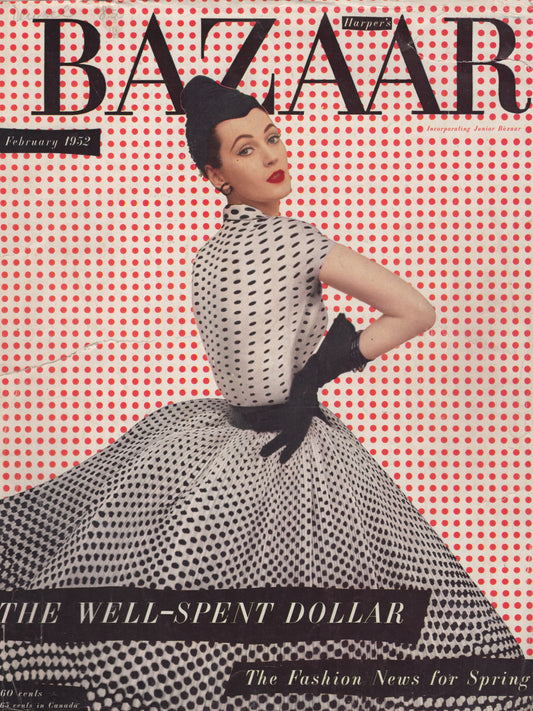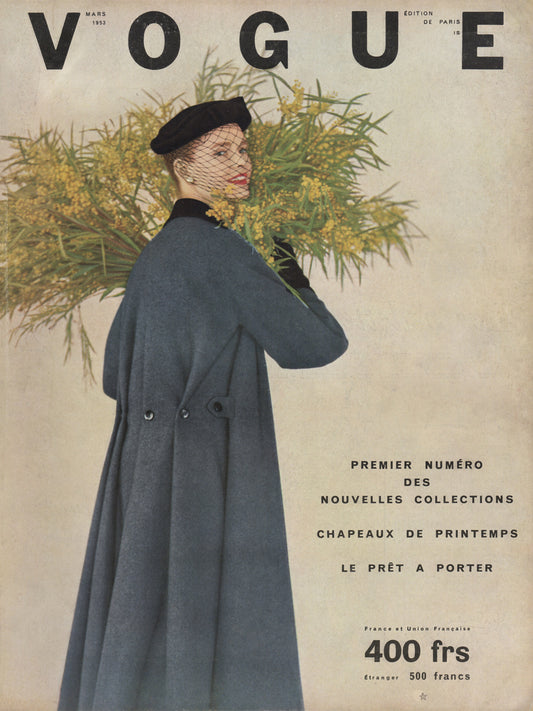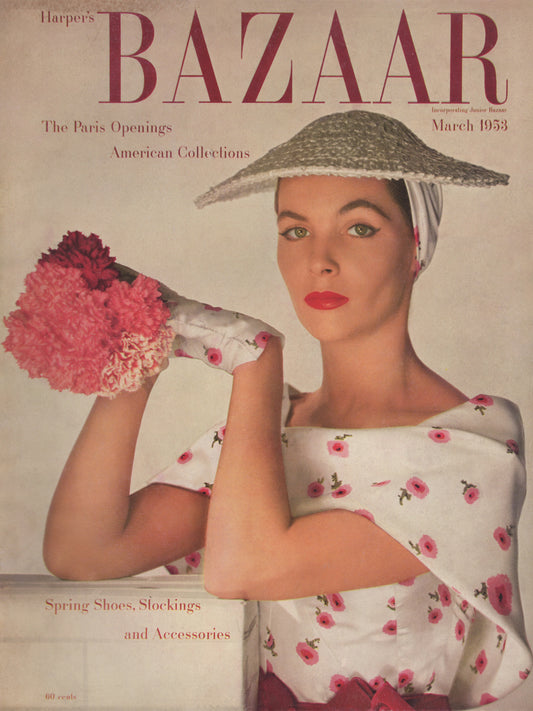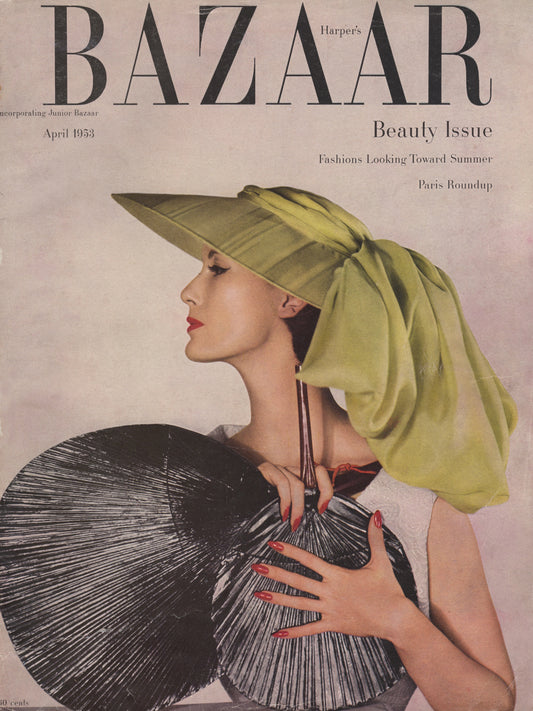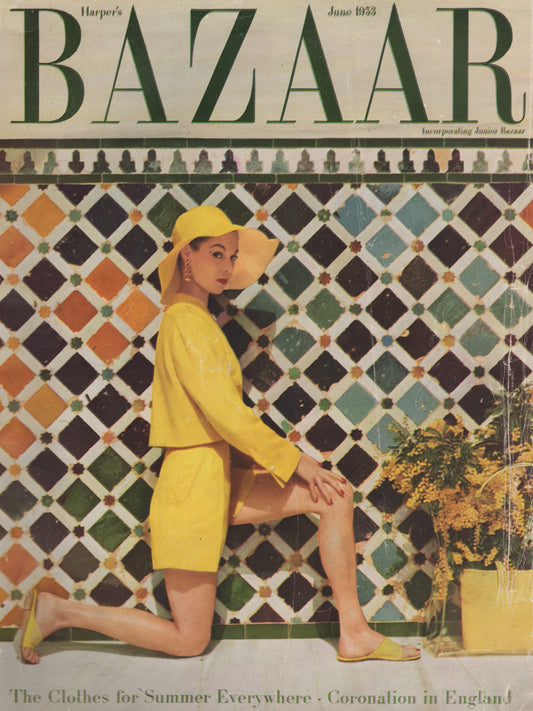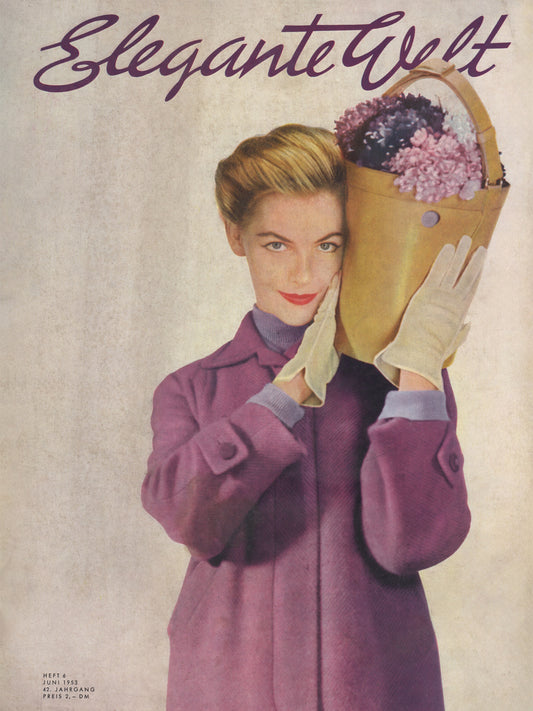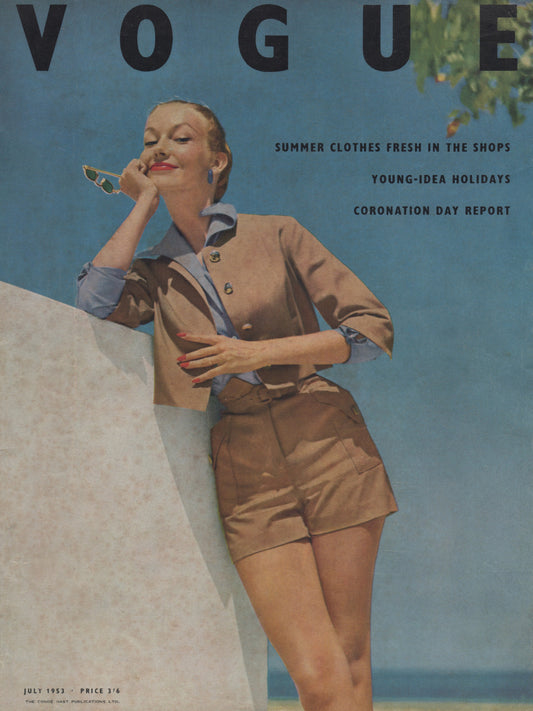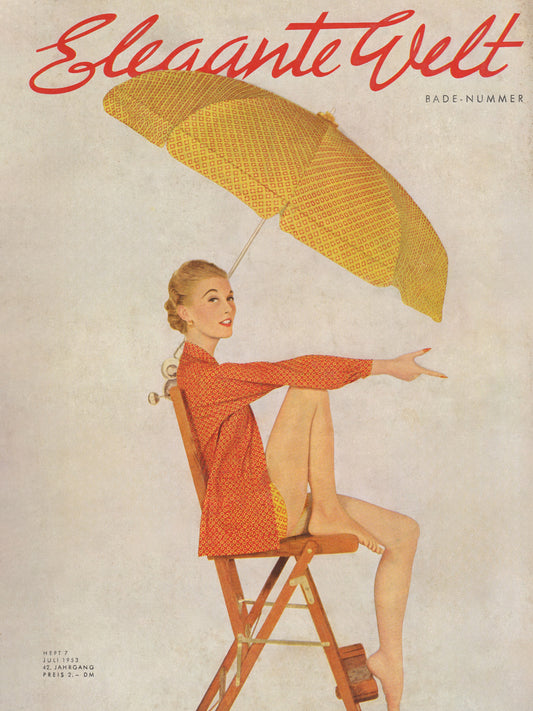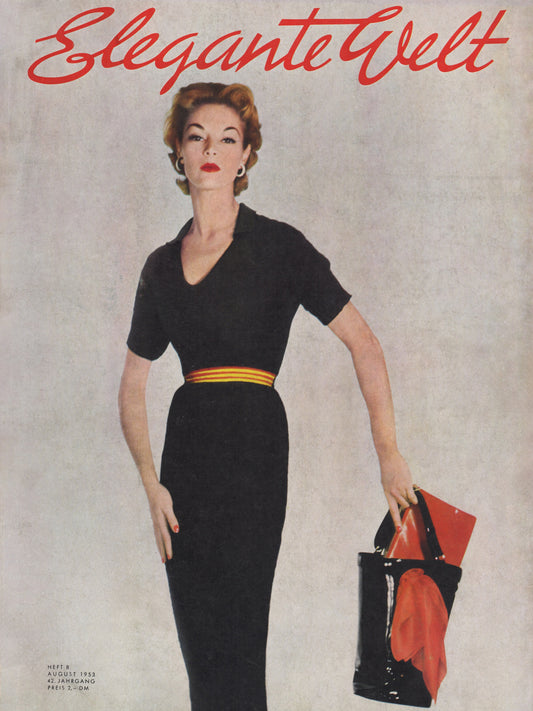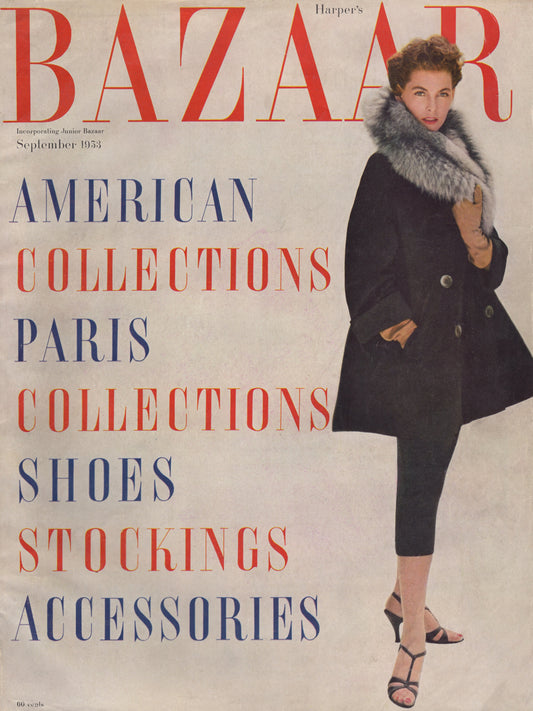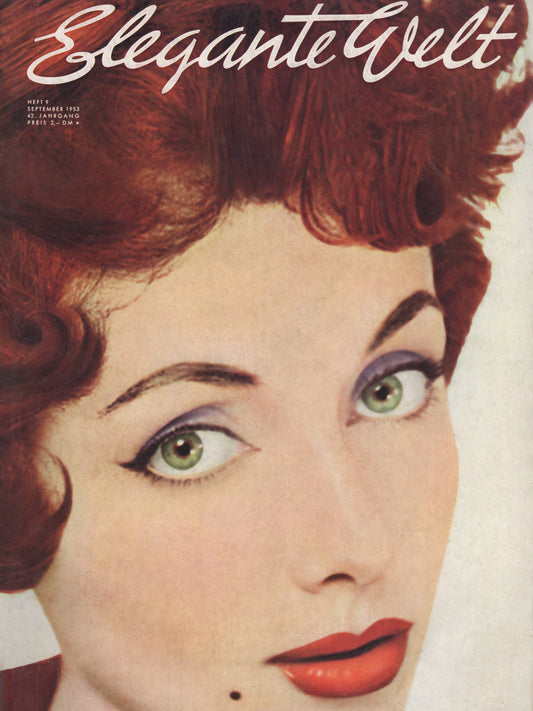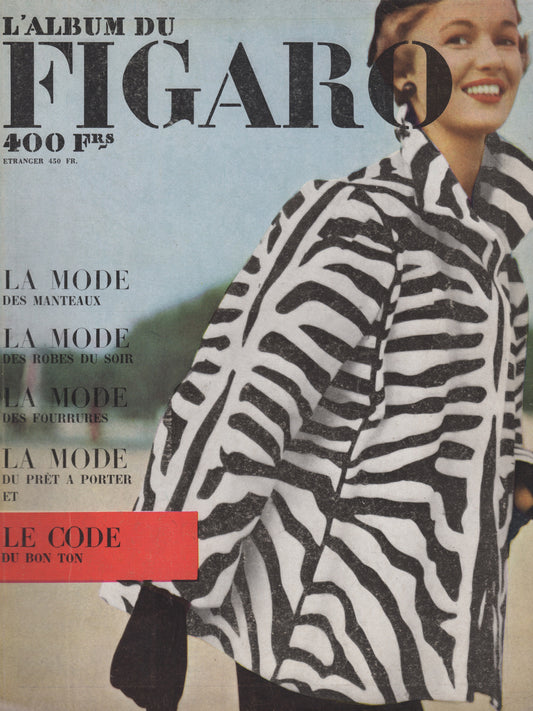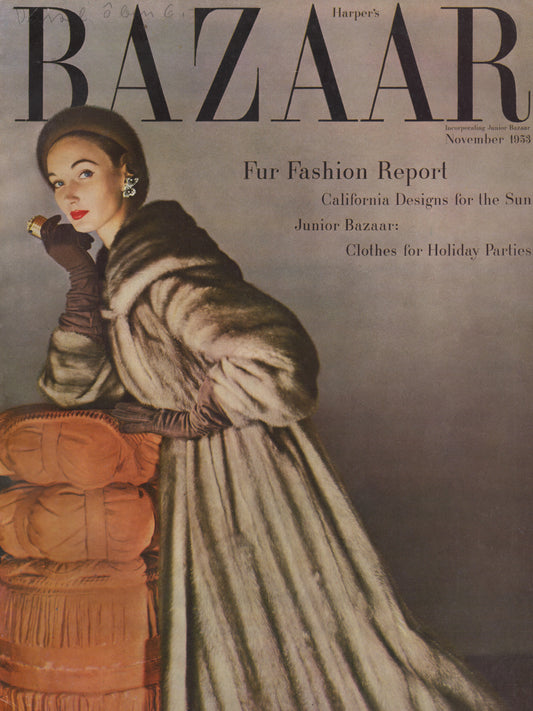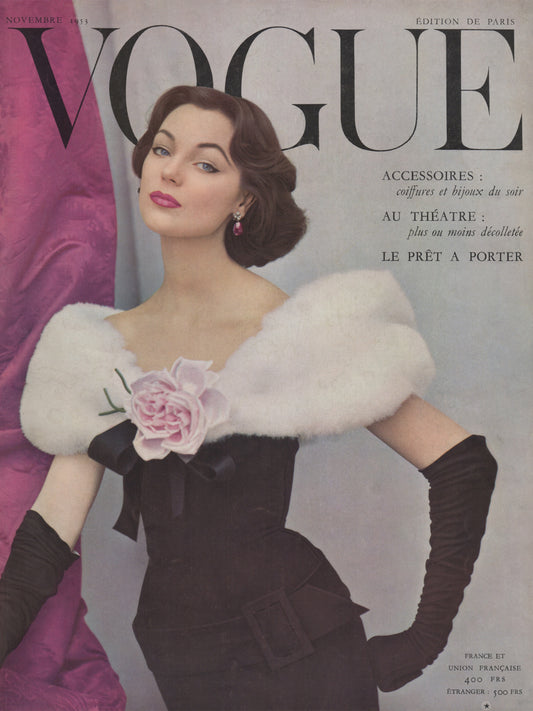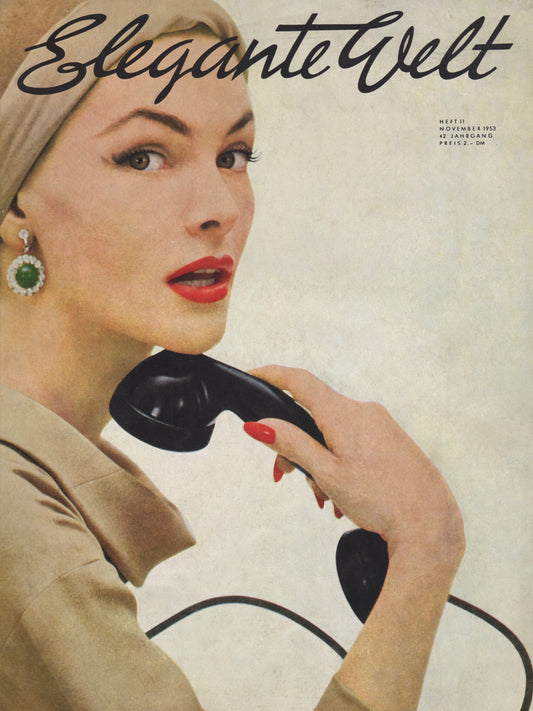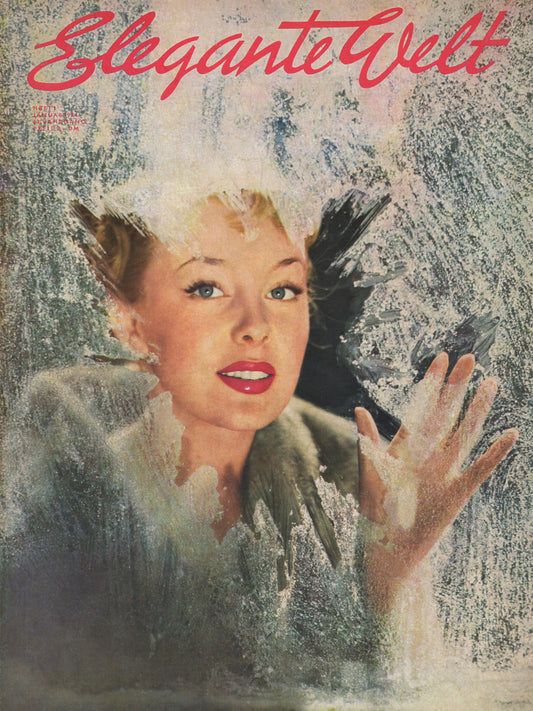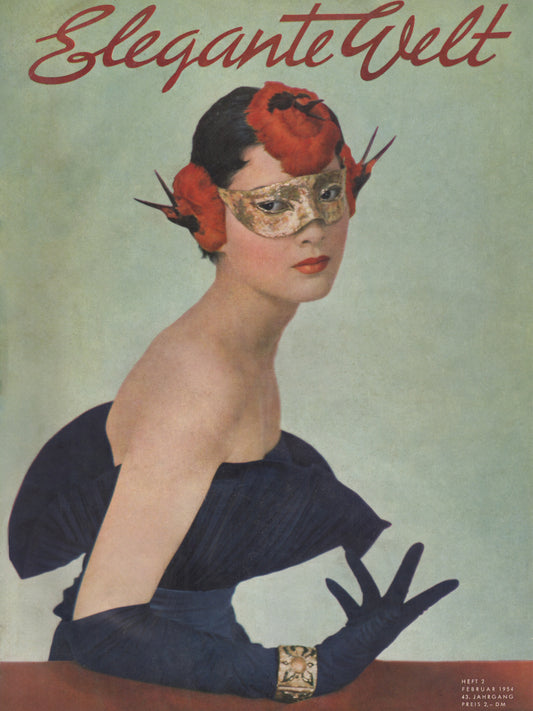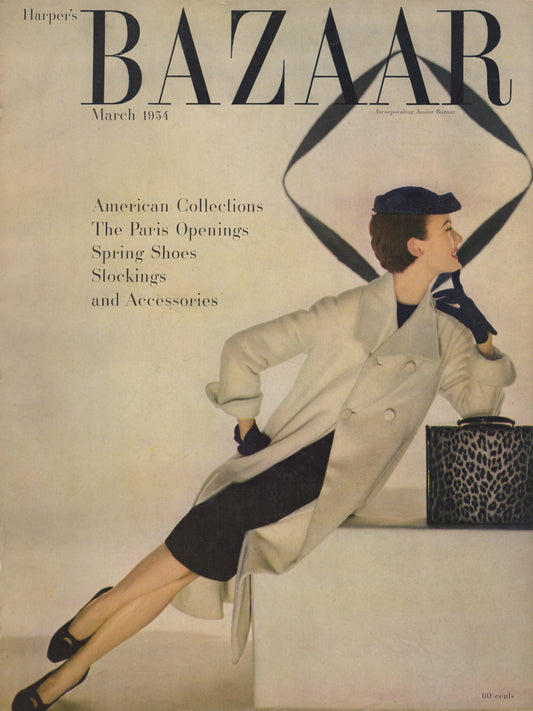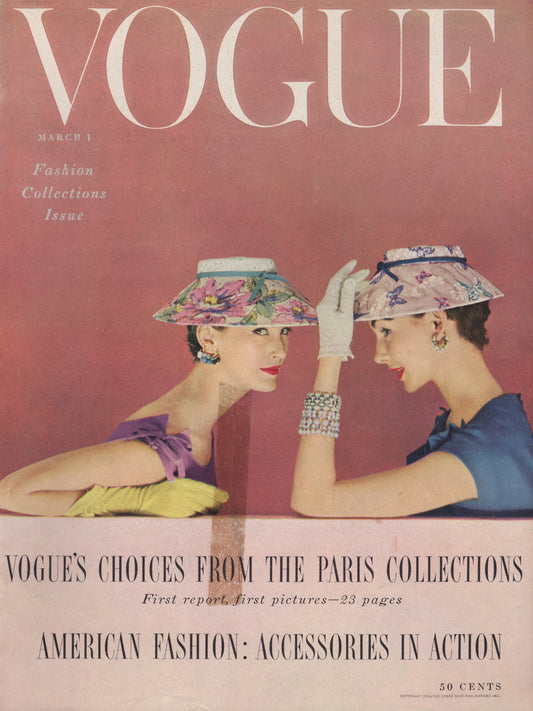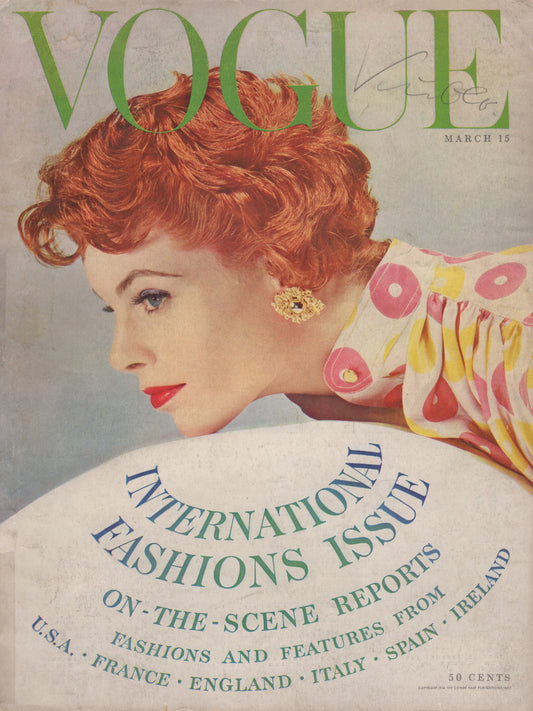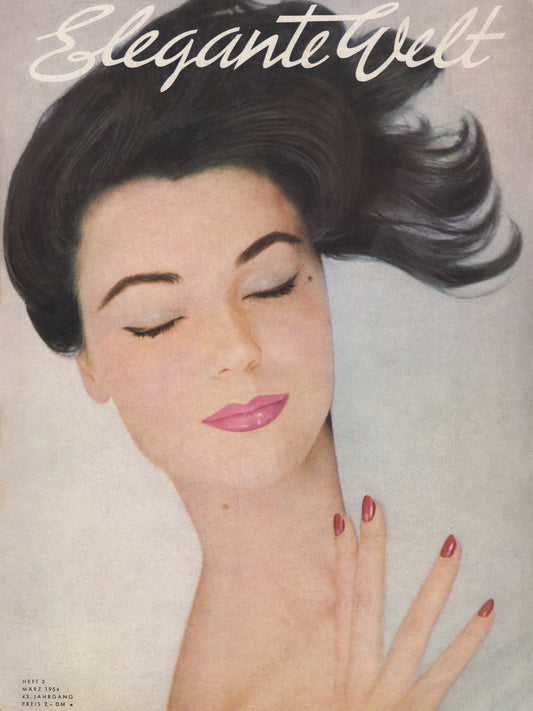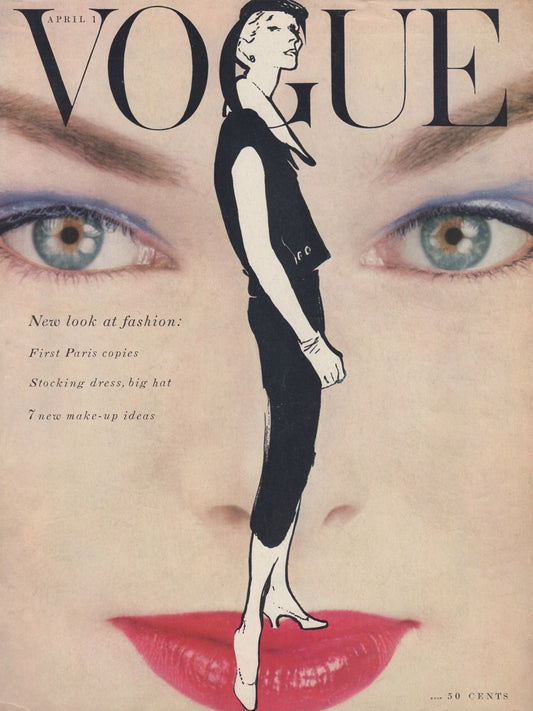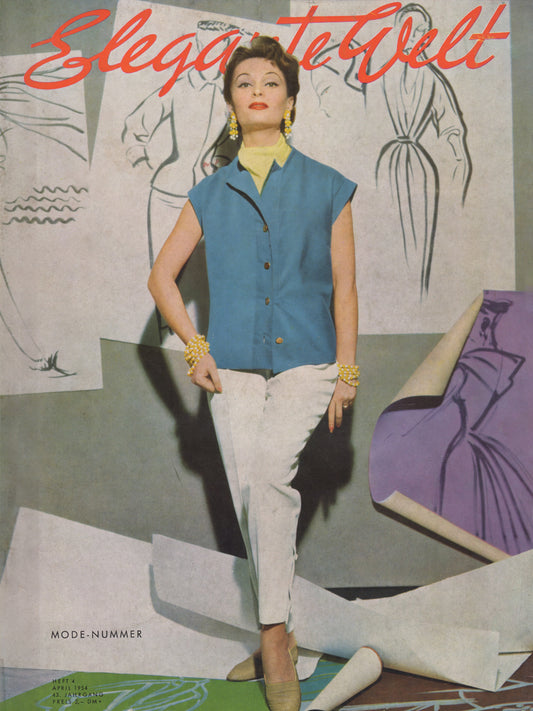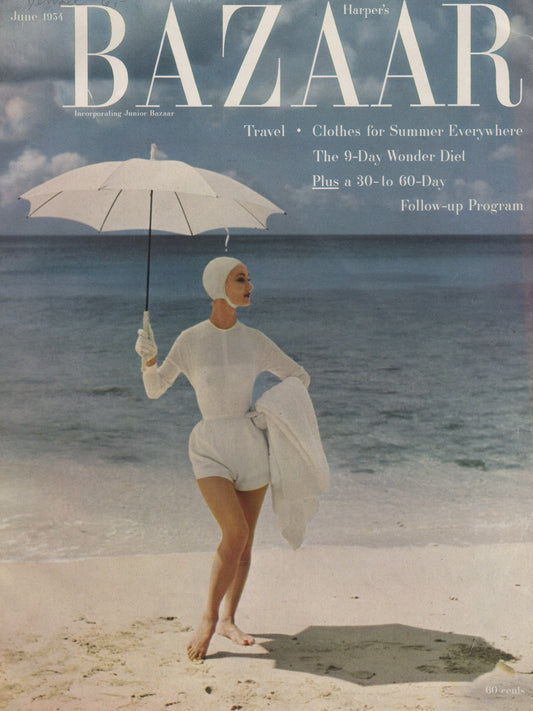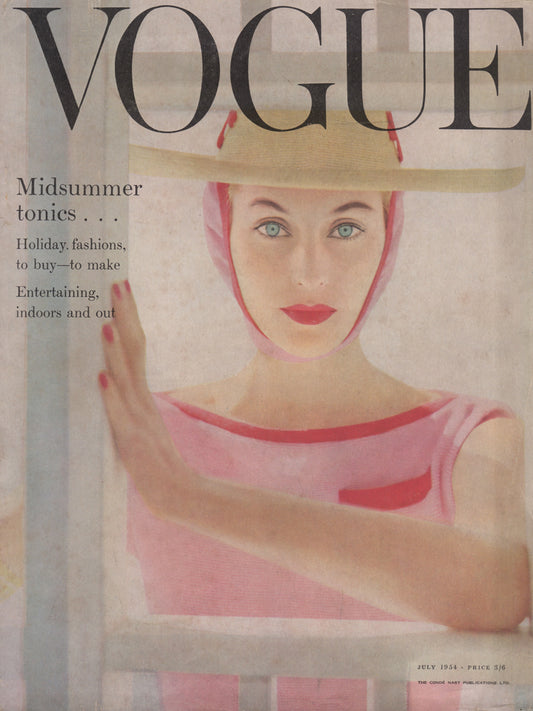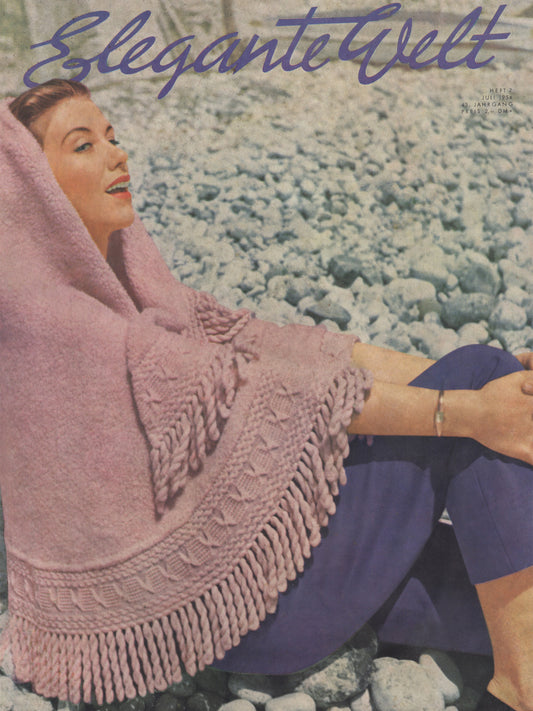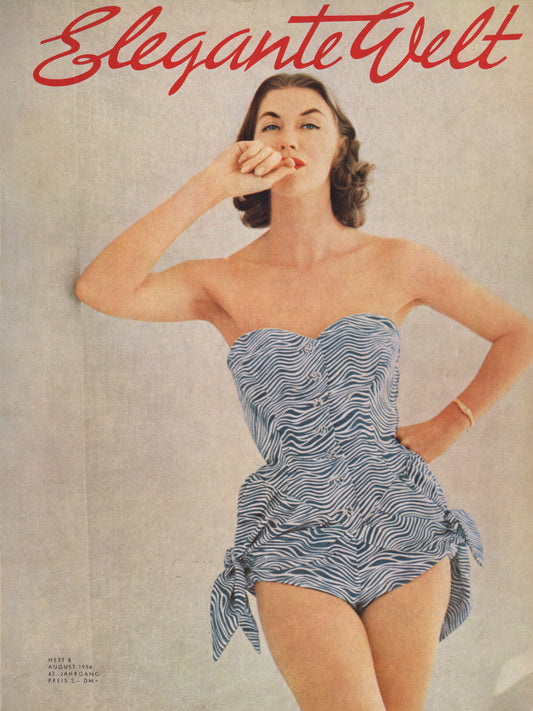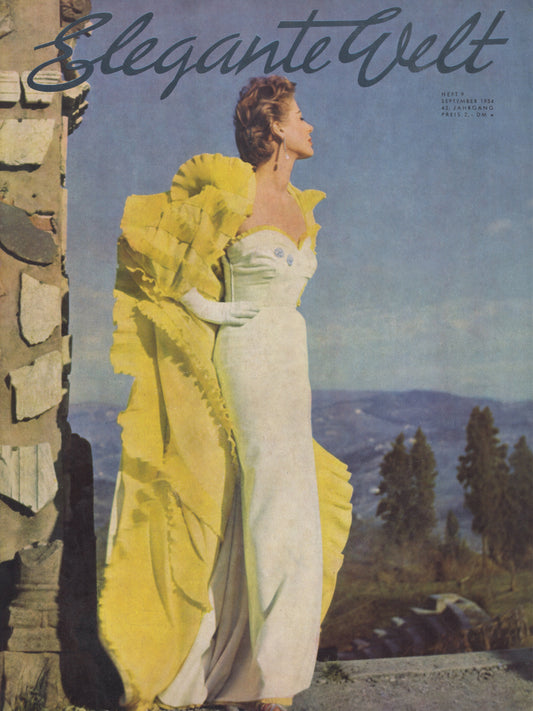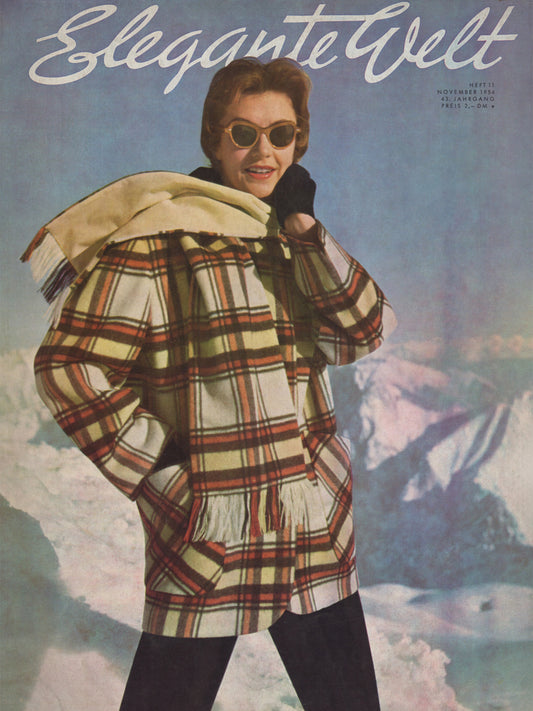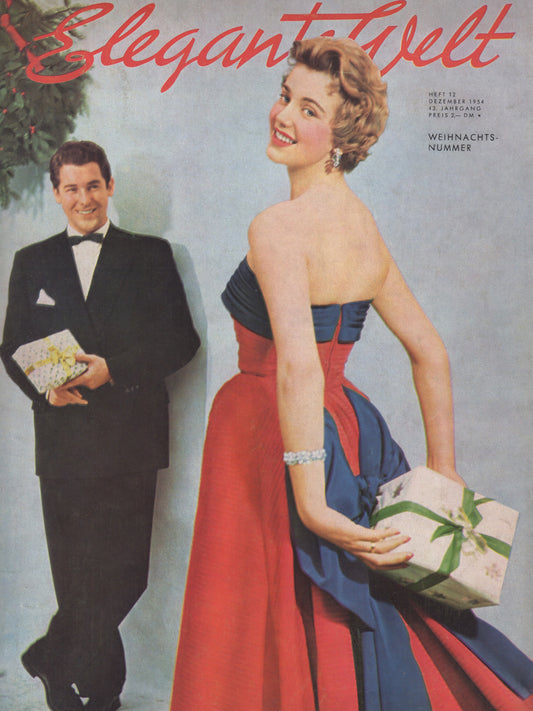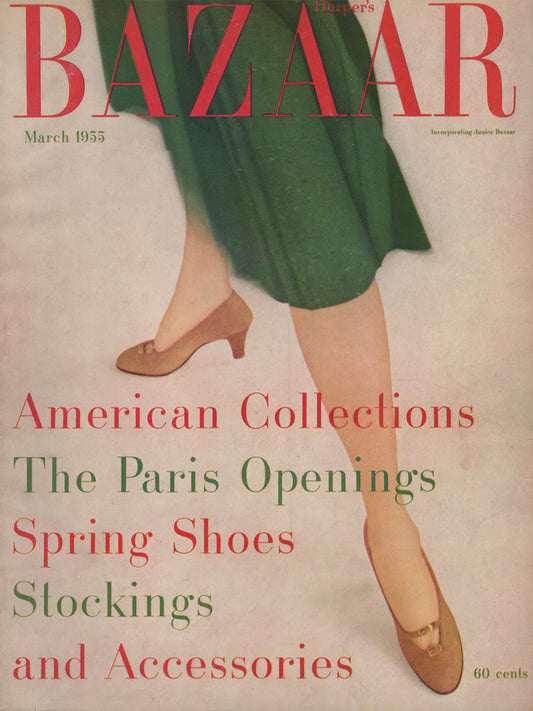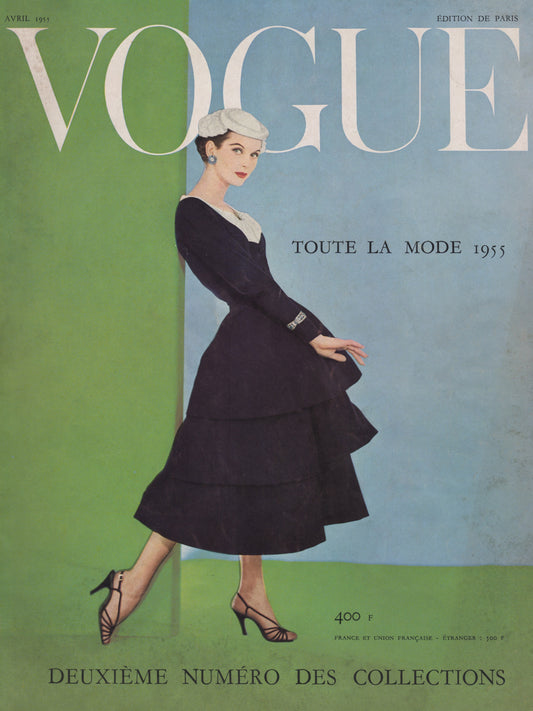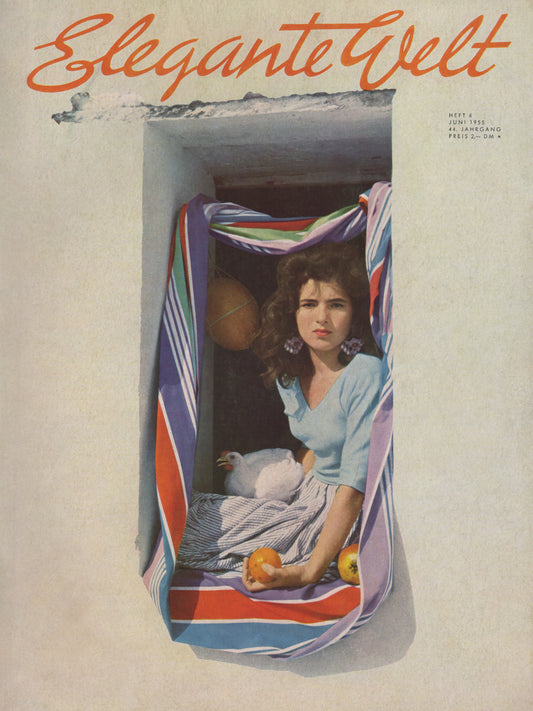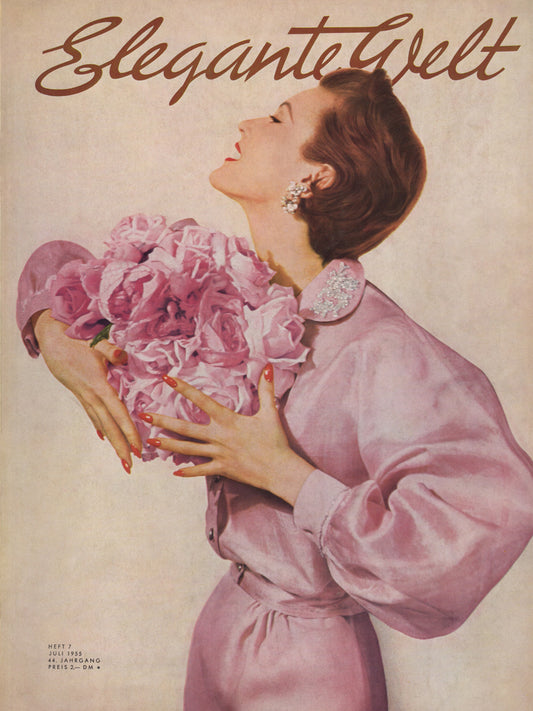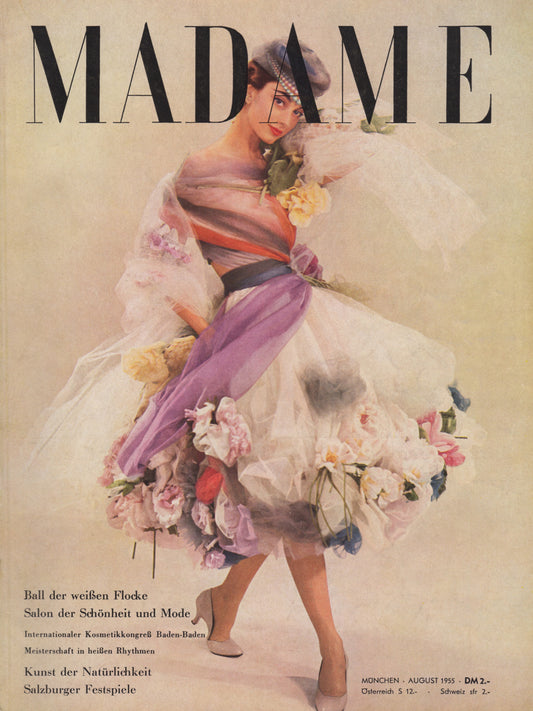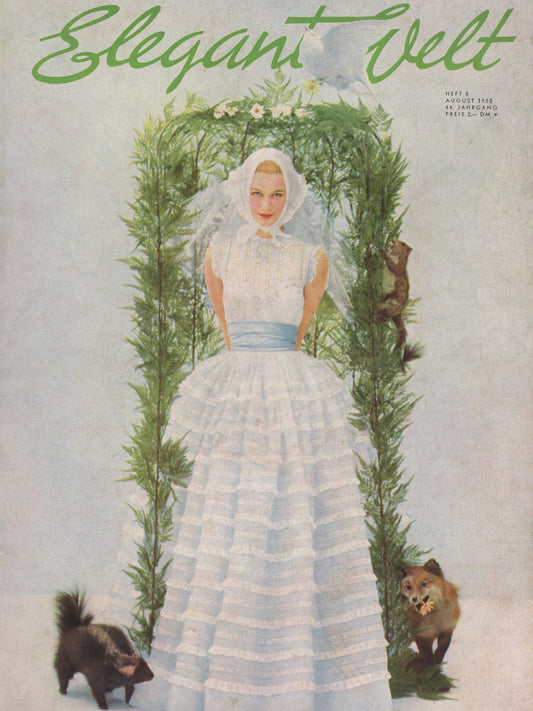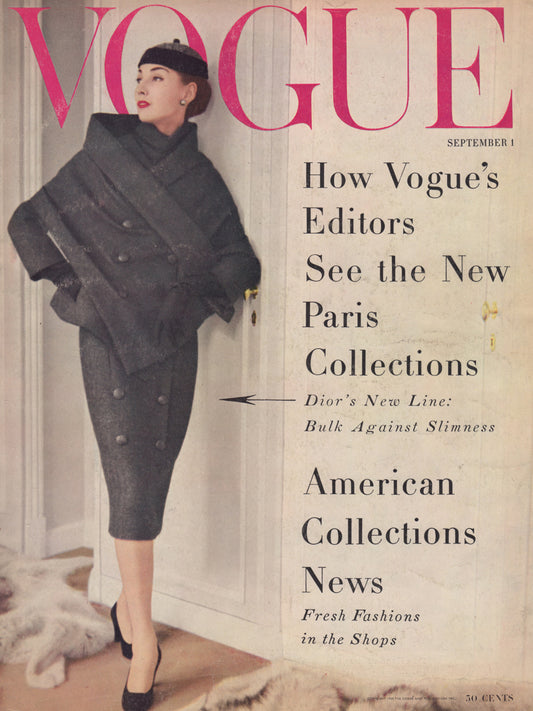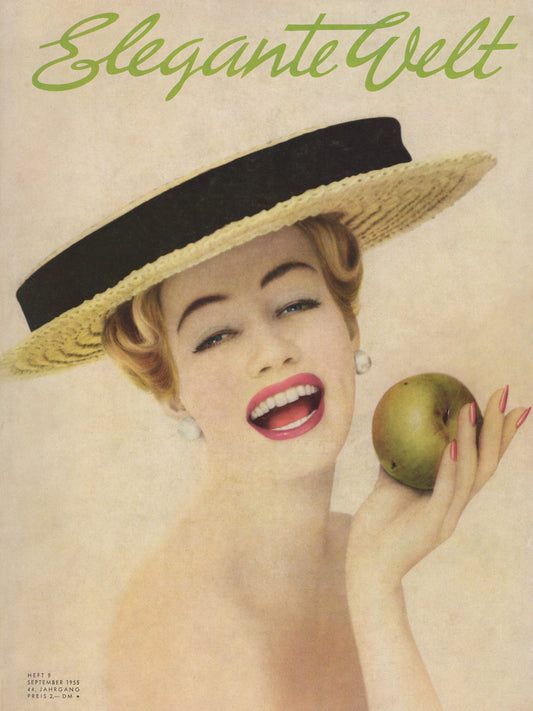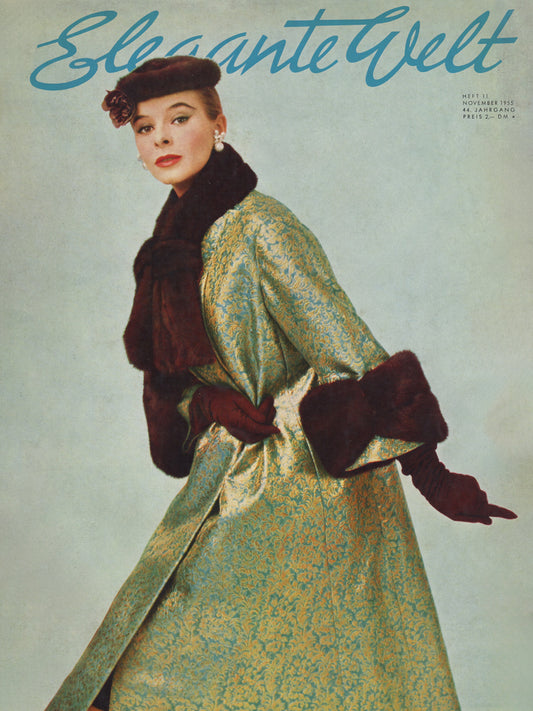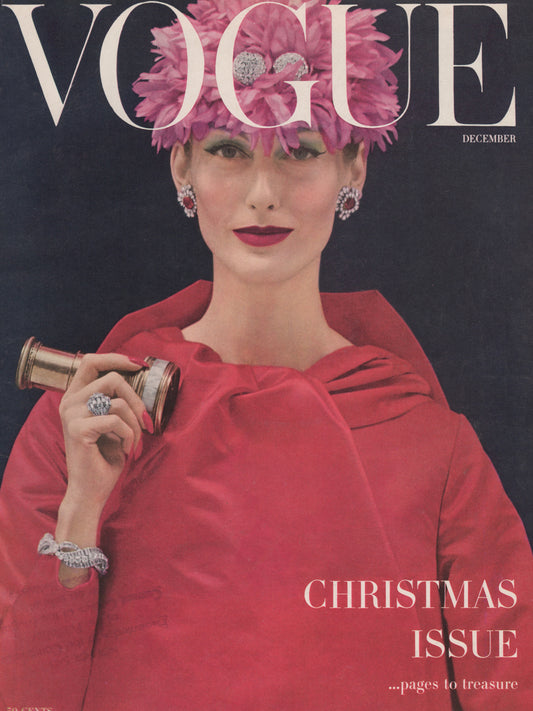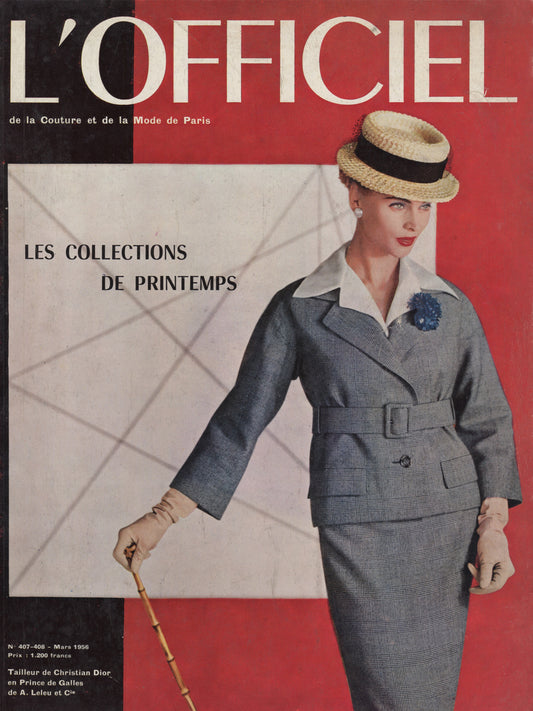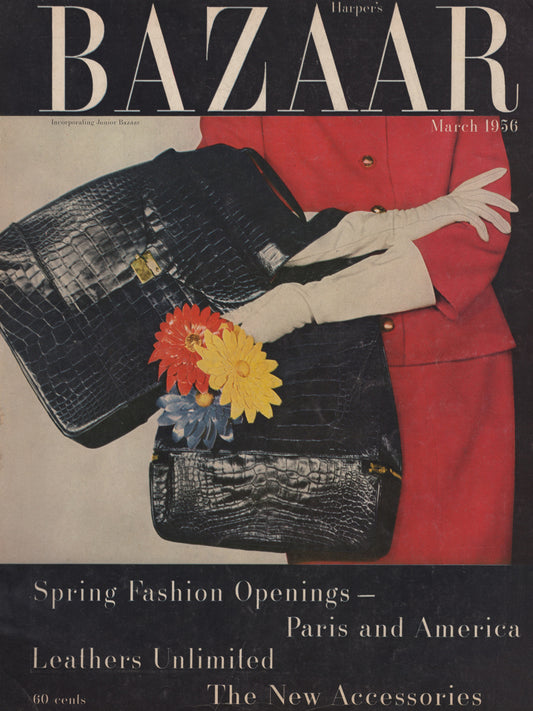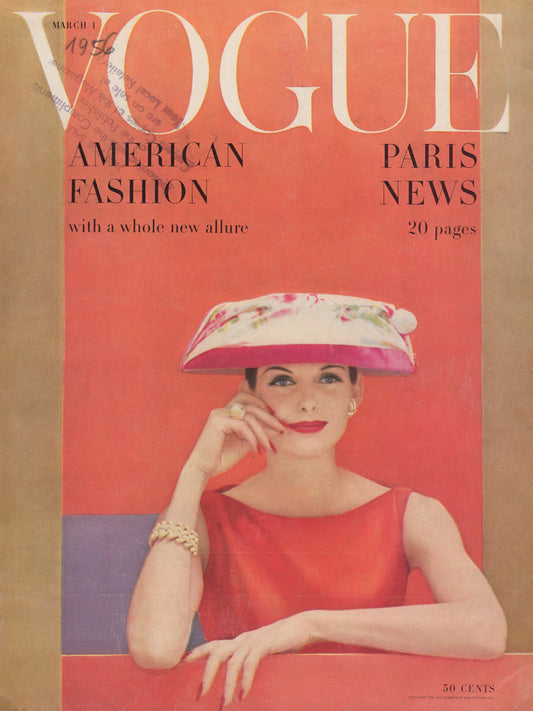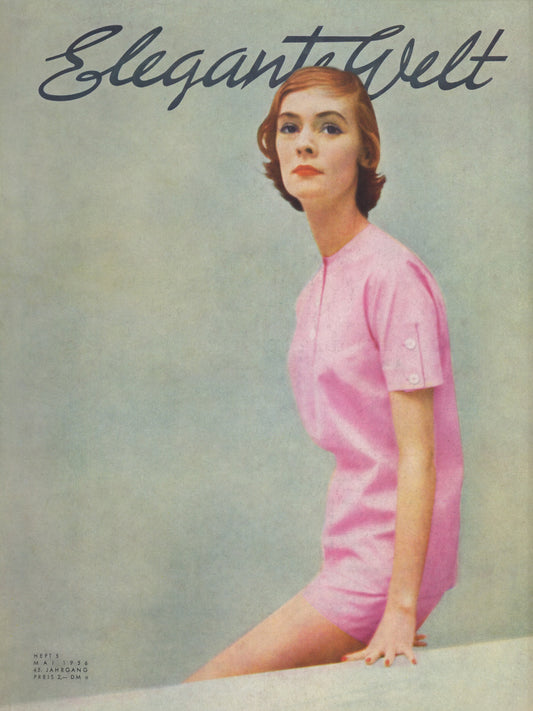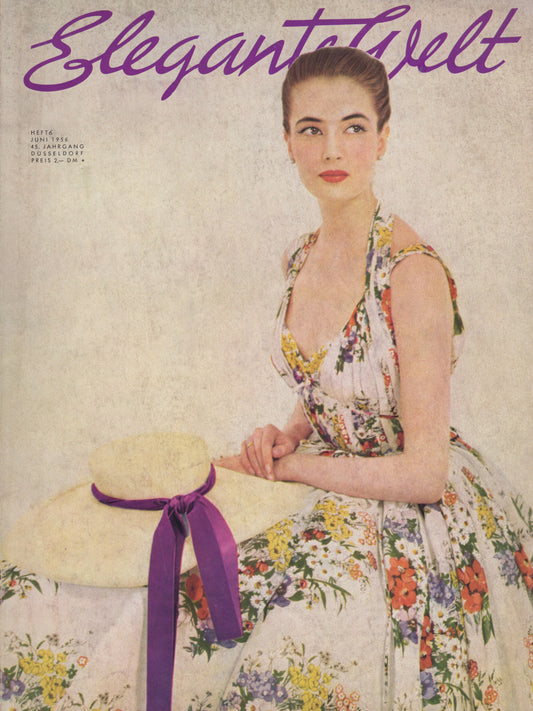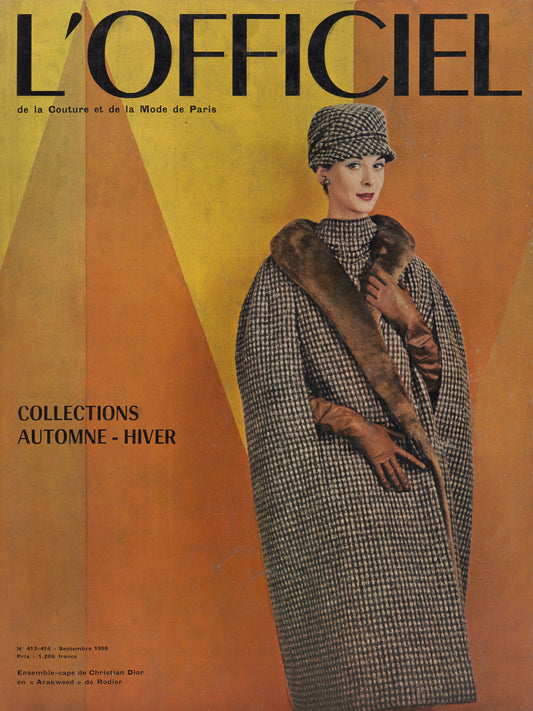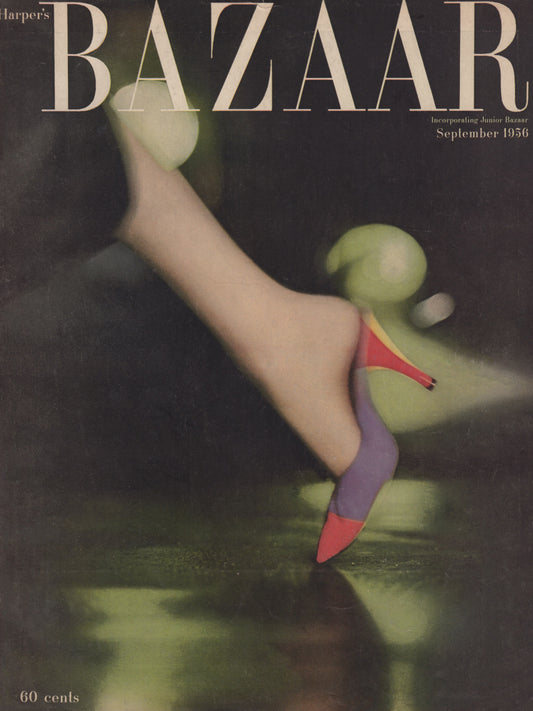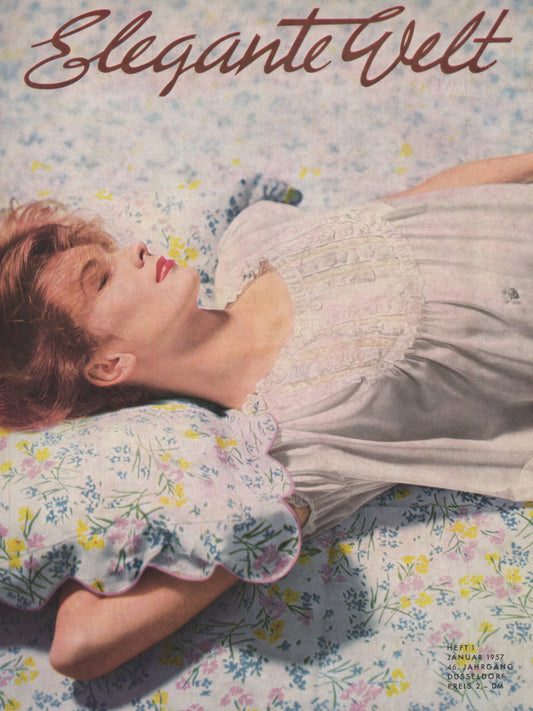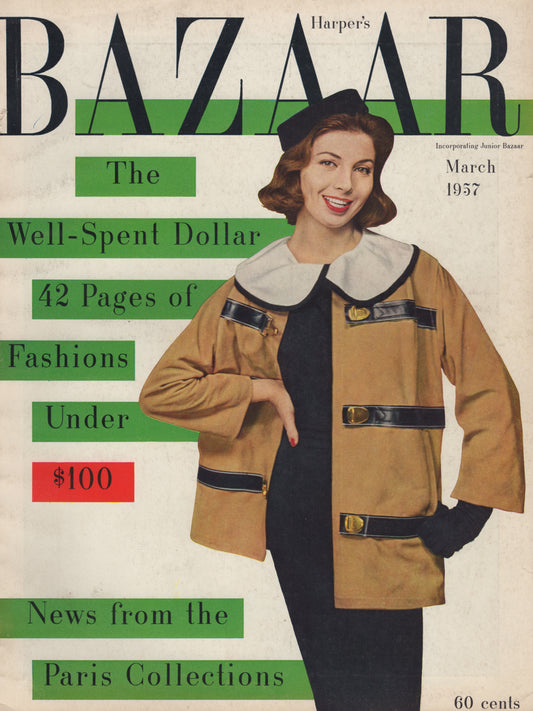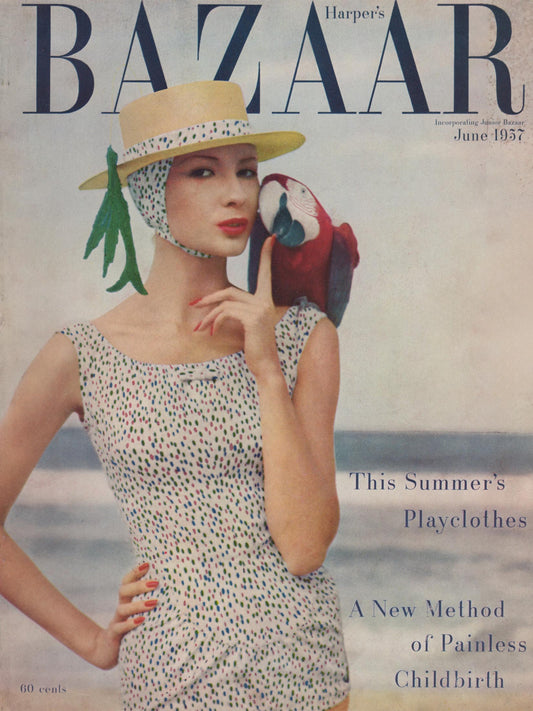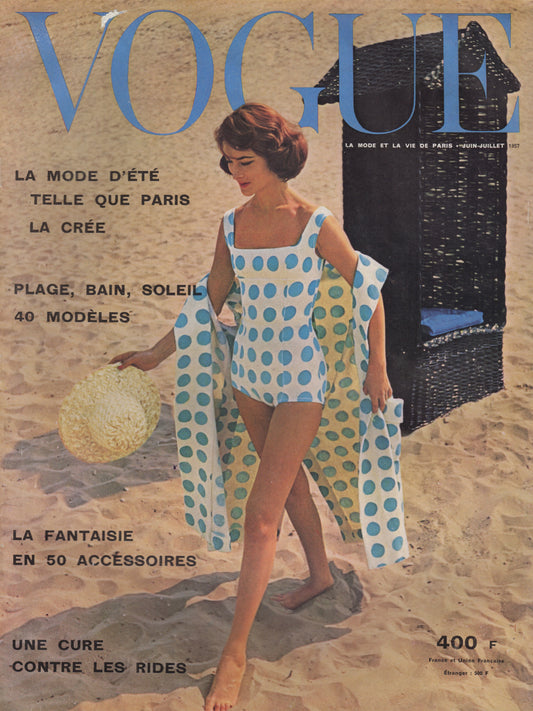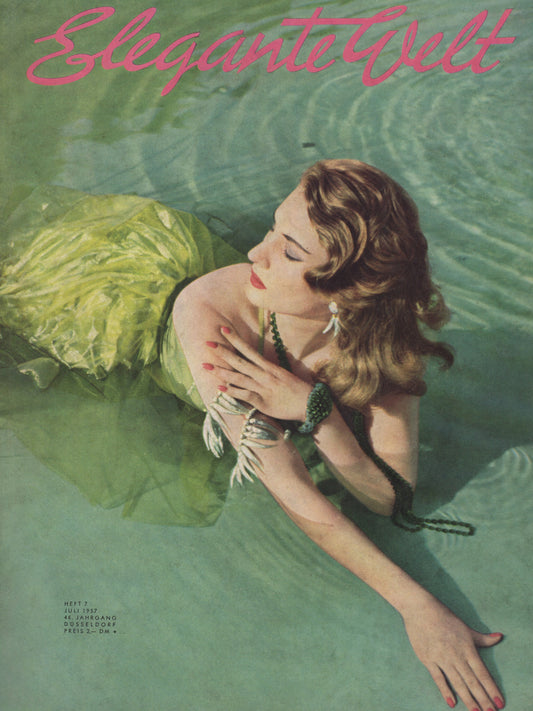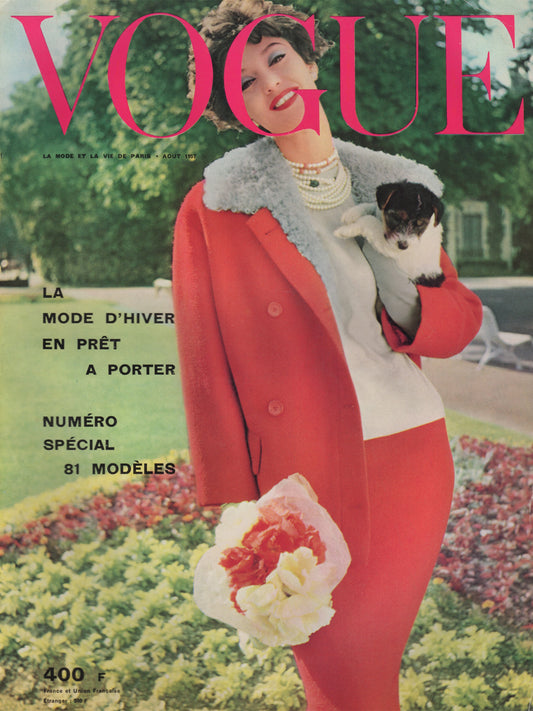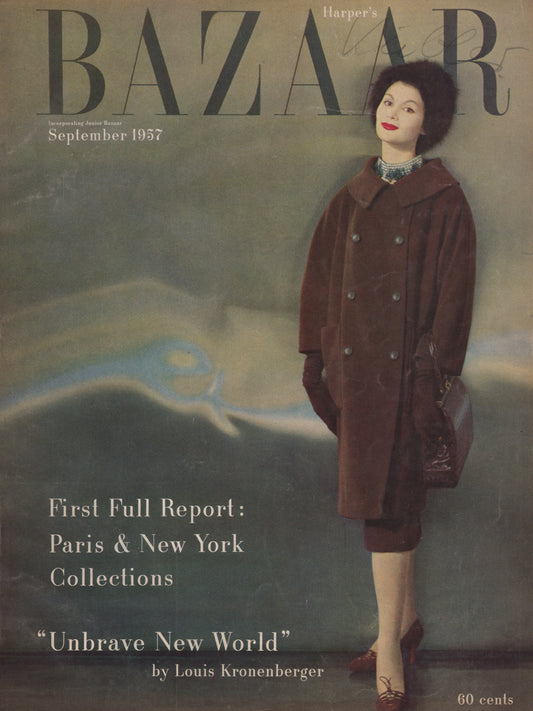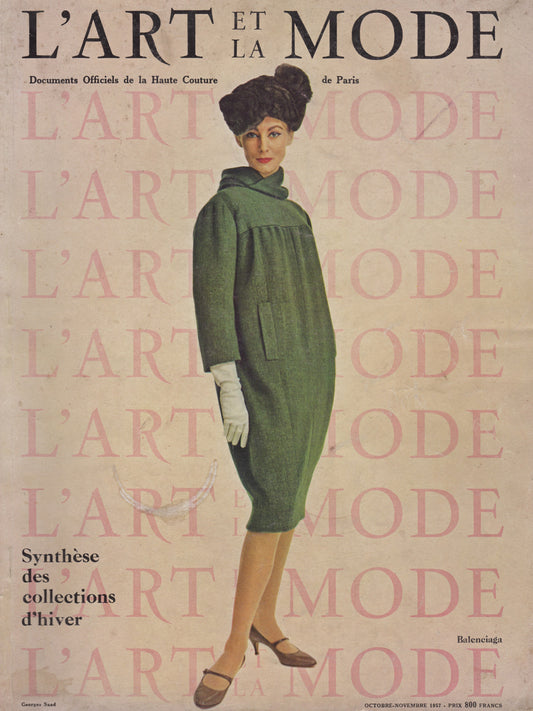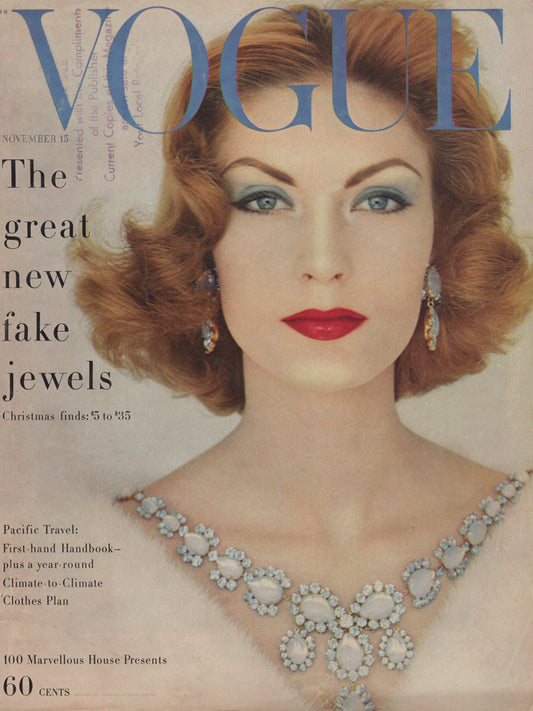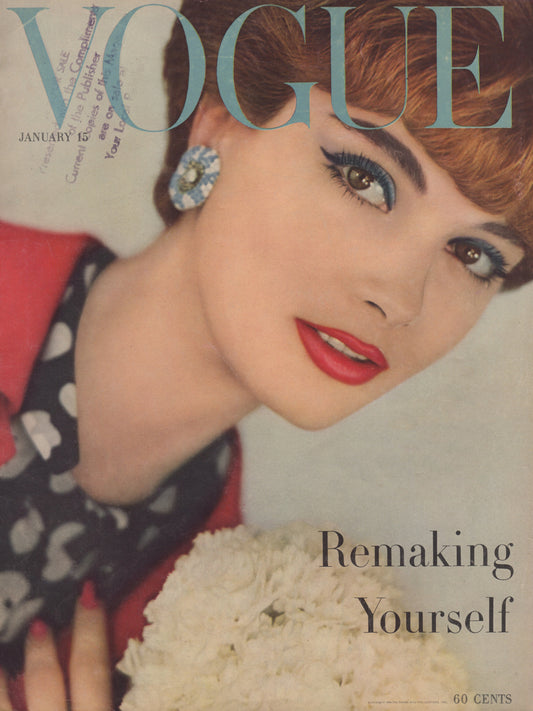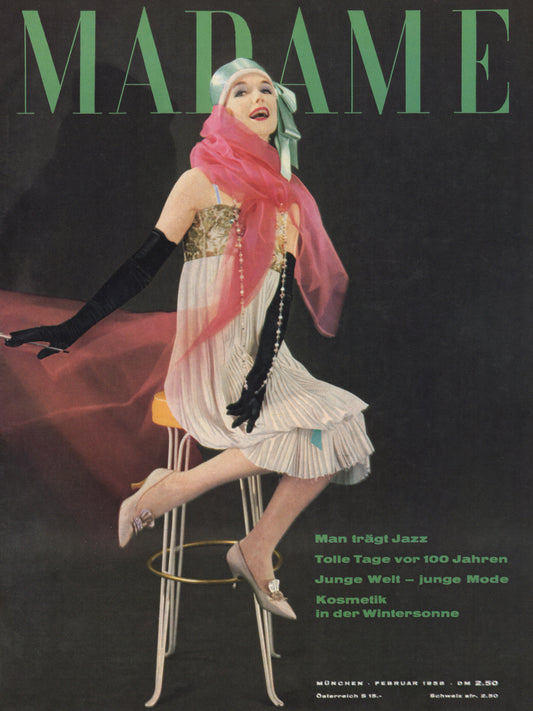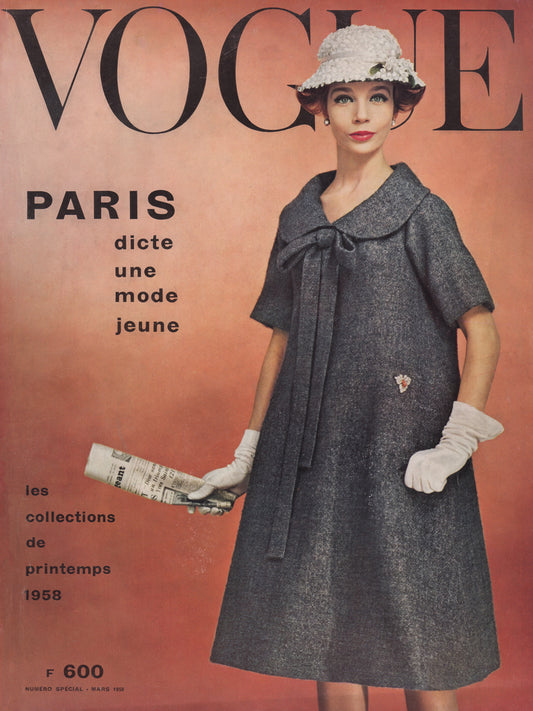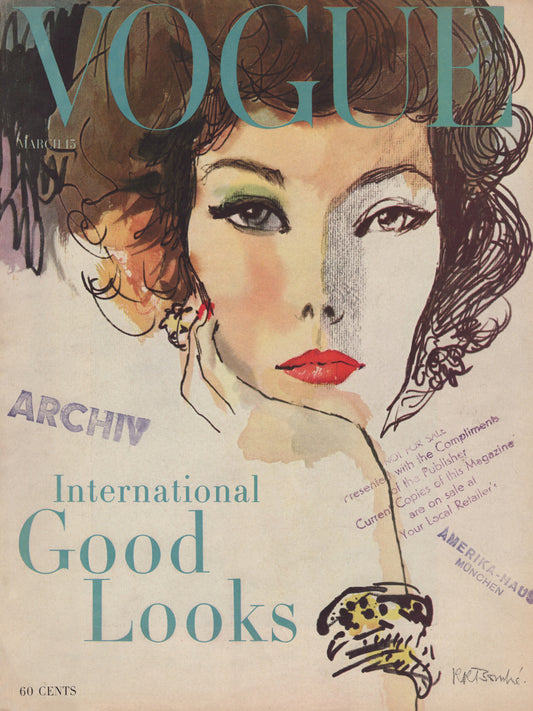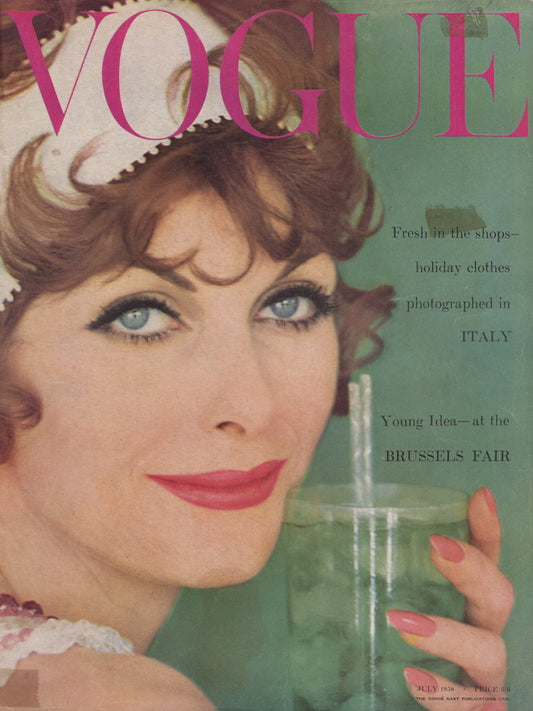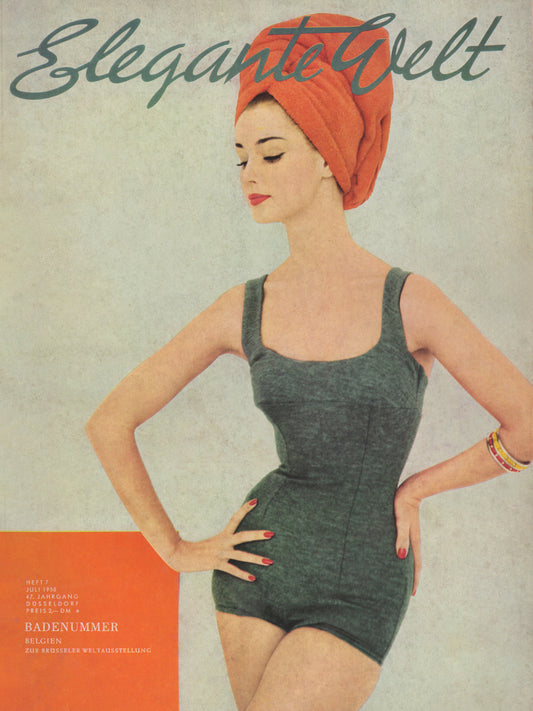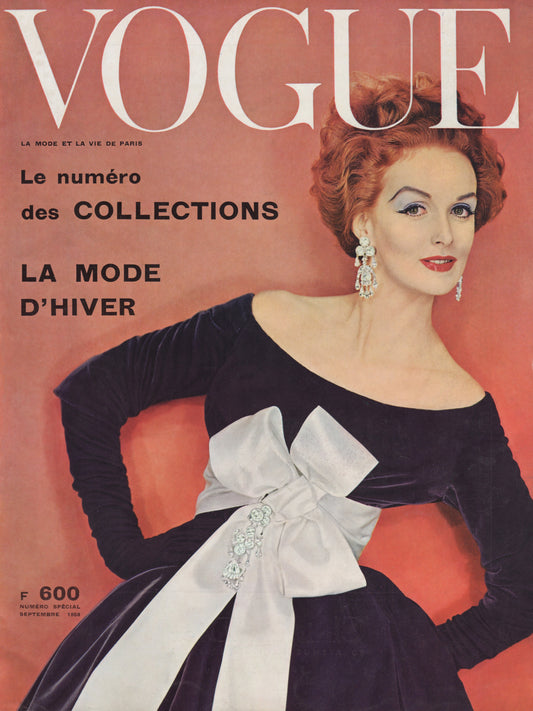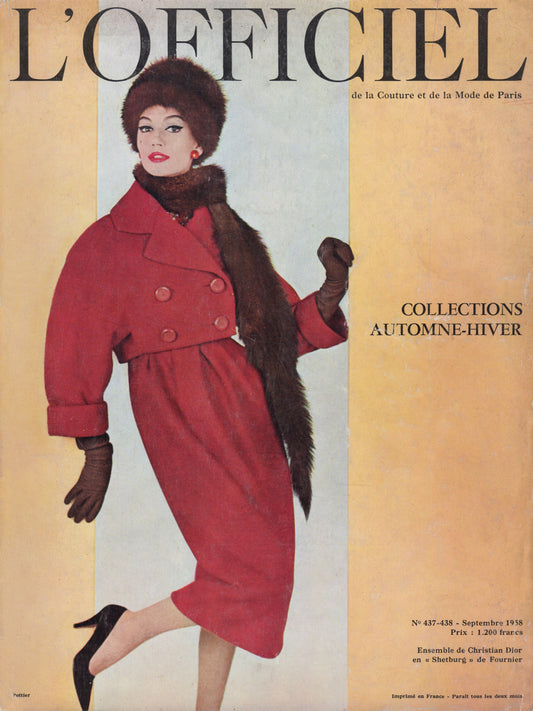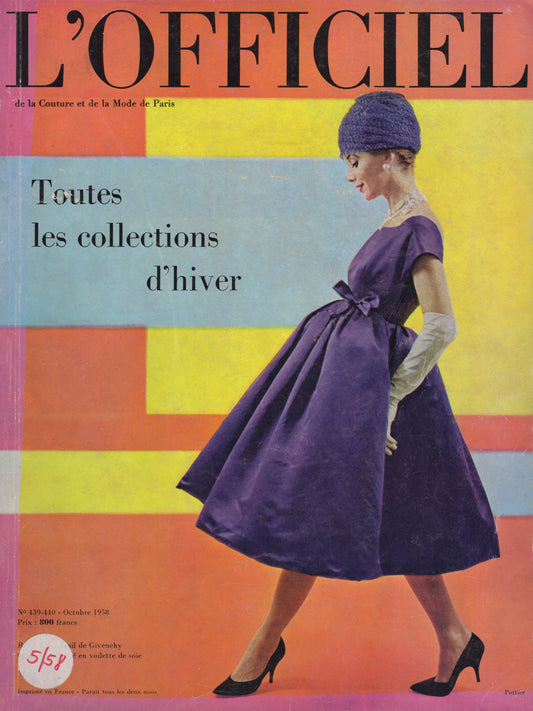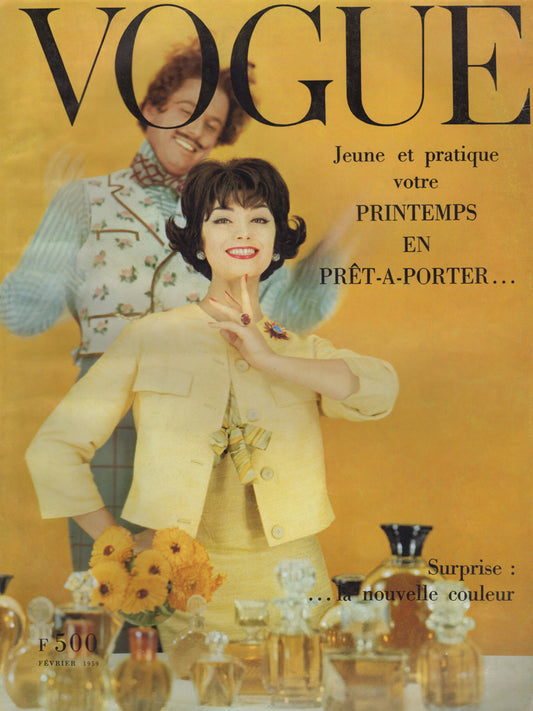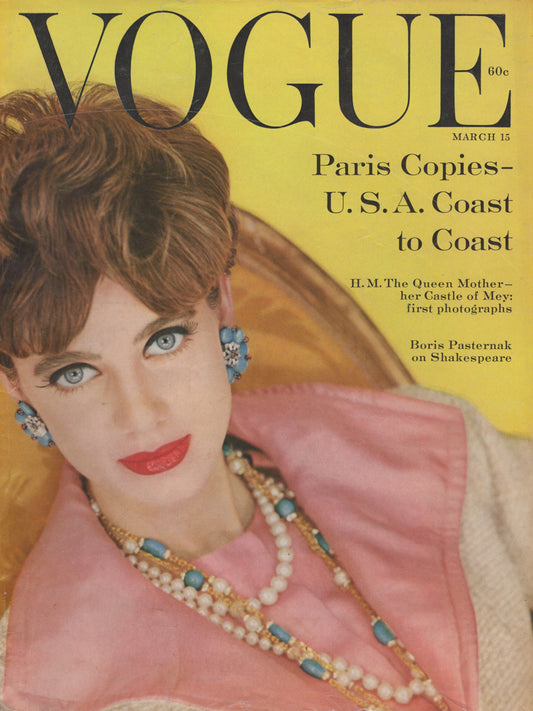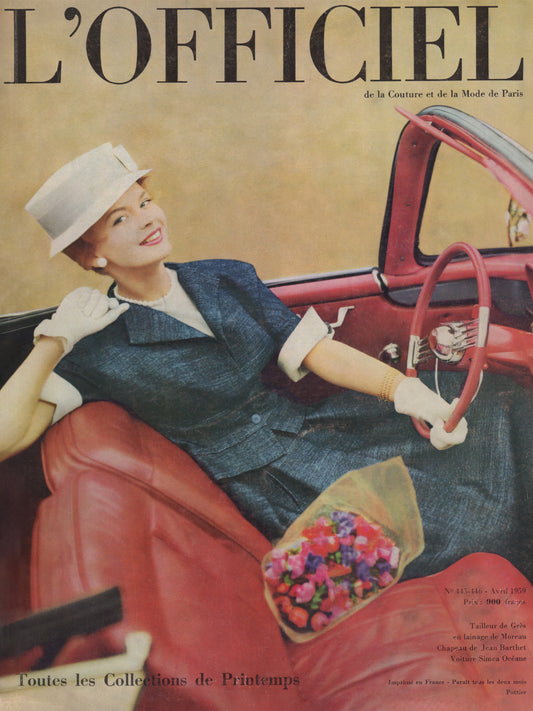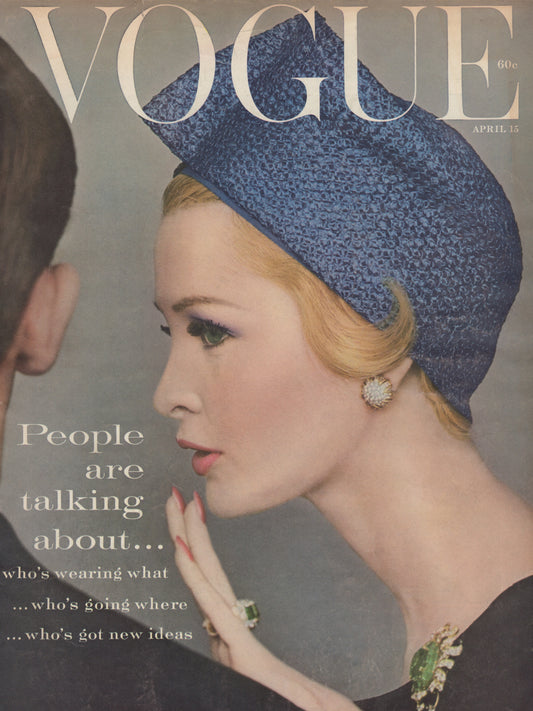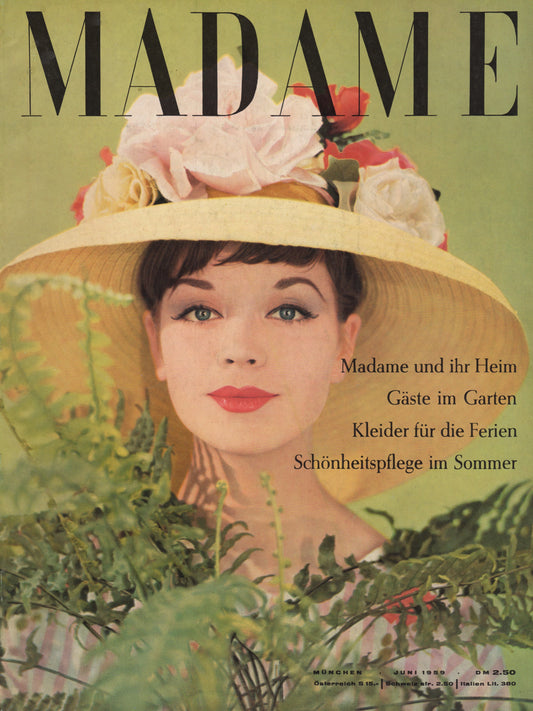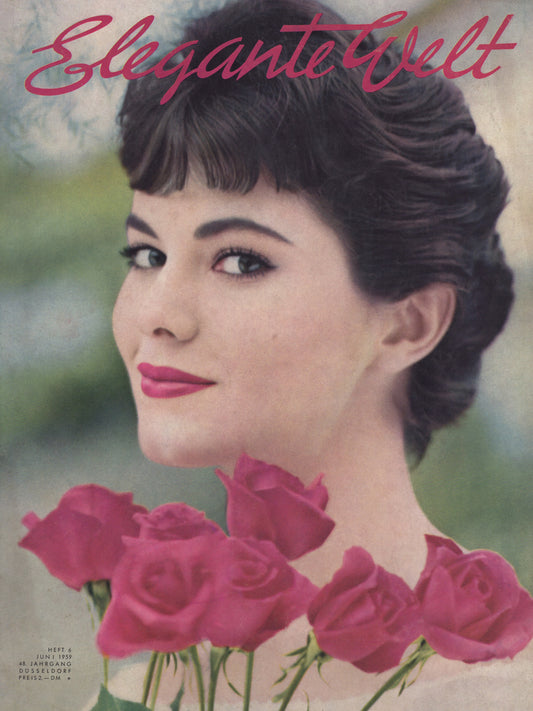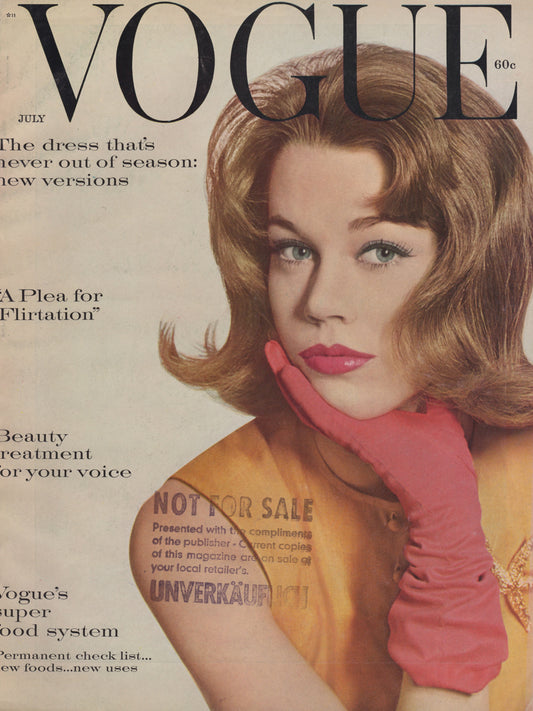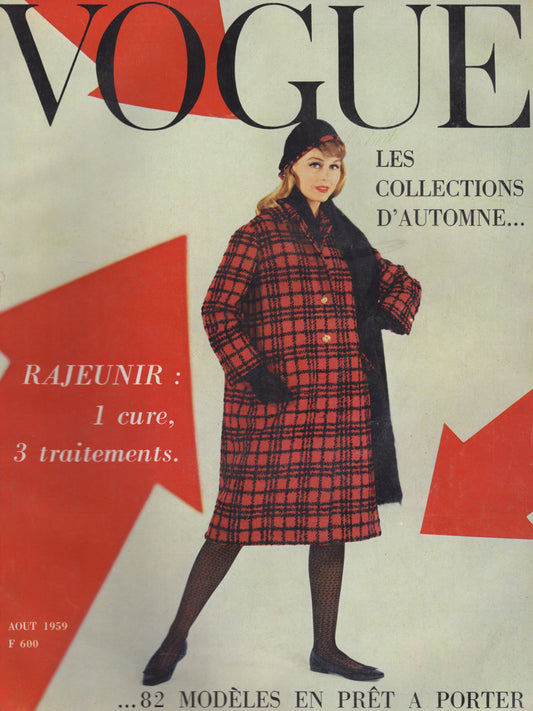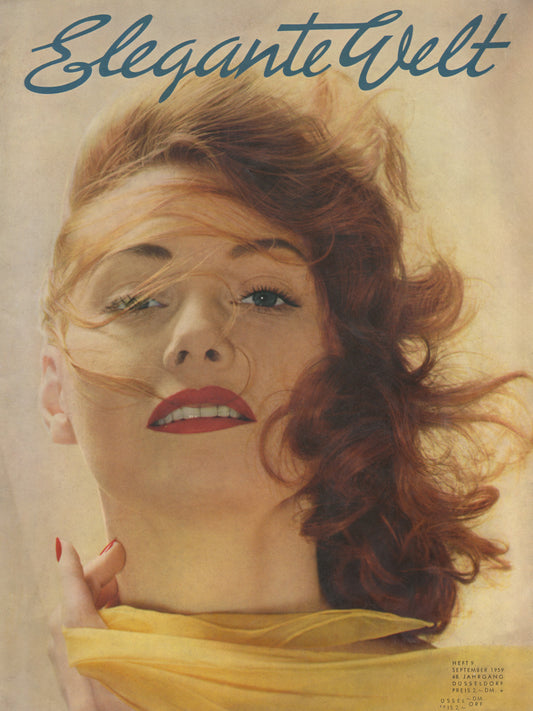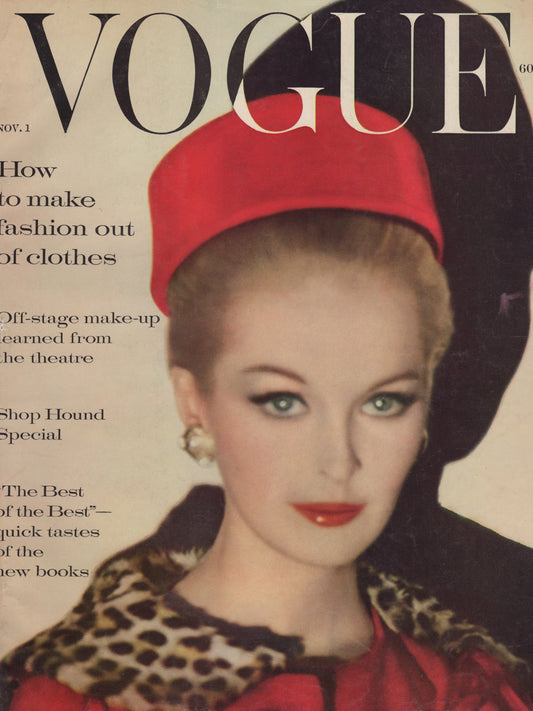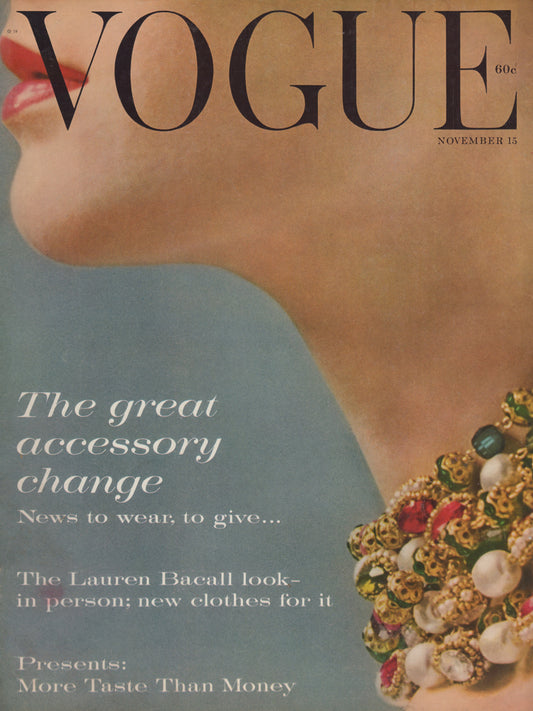The 1950s witnessed significant developments in fashion and women's styles, reflecting a desire for femininity, elegance, and a return to a more polished and glamorous aesthetic after the austerity of wartime fashion. Fashion magazines like Vogue and Harper's Bazaar played crucial roles in shaping trends by highlighting the latest collections from renowned designers such as Christian Dior, Cristóbal Balenciaga, and Pierre Balmain, and capturing the essence of 1950s fashion in elaborate editorial spreads in collaboration with notable photographers such as Richard Avedon, Irving Penn, and Horst P. Horst.
The silhouette of the 1950s was characterized by voluminous, full skirts, worn with crinolines or petticoats underneath. The use of layers and volume in skirts became a hallmark of the era's fashion. One of the most iconic and influential developments in 1950s fashion was Christian Dior's "New Look" that represented a return to glamour and luxury after the restrictions of wartime fashion. This style featured a nipped-in waist, full skirts, and emphasized a feminine hourglass silhouette. While full skirts dominated, tailored suits and pencil skirts were also popular choices for women, reflecting a more streamlined and sophisticated aesthetic. Women embraced structured jackets, fitted waistlines, and slim-fitting pencil skirts that accentuated their curves. Twinsets
became popular casual wear options. Soft pastel hues were prevalent in 1950s fashion. Pink, mint green, baby blue, and lavender were popular choices. Floral prints and polka dots were also fashionable, evoking a feminine and romantic appeal. Accessories such as gloves, hats, and jewelry played a significant role in formal and everyday occasions. The 1950s embraced a polished and glamorous makeup look. The emphasis was on flawless, porcelain-like skin, red lipstick, winged eyeliner, and arched eyebrows. Among the most famous models of the 1950s are Jean Patchett, Dovima, Suzy Parker, Mary Jane Russell, Sunny Harnett, and Lisa Fonssagrives. Fashion icons of the time, such as Audrey Hepburn, Grace Kelly, and Brigitte Bardot, inspire women's styles until today.
-
British VOGUE UK January 1950
Regular price €0,00 EURRegular priceUnit price per -
British VOGUE UK April 1950
Regular price €0,00 EURRegular priceUnit price per -
HARPER'S BAZAAR UK May 1950
Regular price €250,00 EURRegular priceUnit price per -
British VOGUE UK May 1950
Regular price €0,00 EURRegular priceUnit price per -
L'ART ET LA MODE May/June 1950
Regular price €0,00 EURRegular priceUnit price per -
British VOGUE UK August 1950
Regular price €0,00 EURRegular priceUnit price per -
ELEGANTE WELT September 1950
Regular price €0,00 EURRegular priceUnit price per -
HARPER'S BAZAAR UK October 1950
Regular price €0,00 EURRegular priceUnit price per -
L'OFFICIEL PARIS October 1950
Regular price €0,00 EURRegular priceUnit price per -
British VOGUE UK January 1951
Regular price €0,00 EURRegular priceUnit price per -
VOGUE Paris February 1951
Regular price €0,00 EURRegular priceUnit price per -
VOGUE US February 15, 1951
Regular price €250,00 EURRegular priceUnit price per -
L'OFFICIEL PARIS March 1951
Regular price €0,00 EURRegular priceUnit price per -
VOGUE US March 15, 1951
Regular price €180,00 EURRegular priceUnit price per -
L'OFFICIEL PARIS April 1951
Regular price €325,00 EURRegular priceUnit price per -
VOGUE US April 1, 1951
Regular price €225,00 EURRegular priceUnit price per -
L'OFFICIEL PARIS June 1951
Regular price €0,00 EURRegular priceUnit price per -
British VOGUE UK August 1951
Regular price €0,00 EURRegular priceUnit price per -
VOGUE US September 1, 1951
Regular price €0,00 EURRegular priceUnit price per -
British VOGUE UK October 1951
Regular price €0,00 EURRegular priceUnit price per -
ELEGANTE WELT October 1951
Regular price €180,00 EURRegular priceUnit price per -
VOGUE US October 15, 1951
Regular price €0,00 EURRegular priceUnit price per -
L'ART ET LA MODE December 1951/January 1952
Regular price €0,00 EURRegular priceUnit price per -
British VOGUE UK January 1952
Regular price €250,00 EURRegular priceUnit price per -
VOGUE US January 1952
Regular price €180,00 EURRegular priceUnit price per -
VOGUE US February 1, 1952
Regular price €225,00 EURRegular priceUnit price per -
L'OFFICIEL PARIS March 1952
Regular price €0,00 EURRegular priceUnit price per -
HARPER'S BAZAAR US March 1952
Regular price €0,00 EURRegular priceUnit price per -
VOGUE Paris April 1952
Regular price €0,00 EURRegular priceUnit price per -
HARPER'S BAZAAR US May 1952
Regular price €0,00 EURRegular priceUnit price per -
British VOGUE UK June 1952
Regular price €0,00 EURRegular priceUnit price per -
L'OFFICIEL PARIS June 1952
Regular price €0,00 EURRegular priceUnit price per -
VOGUE US July 1952
Regular price €225,00 EURRegular priceUnit price per -
VOGUE US August 15, 1952
Regular price €0,00 EURRegular priceUnit price per -
HARPER'S BAZAAR US September 1952
Regular price €0,00 EURRegular priceUnit price per -
ELEGANTE WELT September 1952
Regular price €0,00 EURRegular priceUnit price per -
ELEGANTE WELT October 1952
Regular price €180,00 EURRegular priceUnit price per -
VOGUE Paris November 1952
Regular price €225,00 EURRegular priceUnit price per -
HARPER'S BAZAAR US December 1952
Regular price €0,00 EURRegular priceUnit price per -
HARPER'S BAZAAR US February 1952
Regular price €0,00 EURRegular priceUnit price per -
VOGUE Paris March 1953
Regular price €325,00 EURRegular priceUnit price per -
HARPER'S BAZAAR US March 1953
Regular price €250,00 EURRegular priceUnit price per -
HARPER'S BAZAAR US April 1953
Regular price €0,00 EURRegular priceUnit price per -
HARPER'S BAZAAR US June 1953
Regular price €0,00 EURRegular priceUnit price per -
ELEGANTE WELT June 1953
Regular price €0,00 EURRegular priceUnit price per -
British VOGUE UK July 1953
Regular price €0,00 EURRegular priceUnit price per -
ELEGANTE WELT July 1953
Regular price €0,00 EURRegular priceUnit price per -
ELEGANTE WELT August 1953
Regular price €0,00 EURRegular priceUnit price per -
HARPER'S BAZAAR US September 1953
Regular price €0,00 EURRegular priceUnit price per -
ELEGANTE WELT September 1953
Regular price €0,00 EURRegular priceUnit price per -
L'ALBUM DU FIGARO October/November 1953
Regular price €0,00 EURRegular priceUnit price per -
HARPER'S BAZAAR US November 1953
Regular price €0,00 EURRegular priceUnit price per -
VOGUE Paris November 1953
Regular price €225,00 EURRegular priceUnit price per -
ELEGANTE WELT November 1953
Regular price €0,00 EURRegular priceUnit price per -
ELEGANTE WELT January 1954
Regular price €0,00 EURRegular priceUnit price per -
ELEGANTE WELT February 1954
Regular price €0,00 EURRegular priceUnit price per -
HARPER'S BAZAAR US March 1954
Regular price €295,00 EURRegular priceUnit price per -
VOGUE US March 1, 1954
Regular price €0,00 EURRegular priceUnit price per -
VOGUE US March 15, 1954
Regular price €0,00 EURRegular priceUnit price per -
ELEGANTE WELT March 1954
Regular price €0,00 EURRegular priceUnit price per -
VOGUE US April 1, 1954
Regular price €0,00 EURRegular priceUnit price per -
ELEGANTE WELT April 1954
Regular price €0,00 EURRegular priceUnit price per -
HARPER'S BAZAAR US June 1954
Regular price €0,00 EURRegular priceUnit price per -
British VOGUE UK July 1954
Regular price €0,00 EURRegular priceUnit price per -
ELEGANTE WELT July 1954
Regular price €0,00 EURRegular priceUnit price per -
ELEGANTE WELT August 1954
Regular price €0,00 EURRegular priceUnit price per -
ELEGANTE WELT September 1954
Regular price €0,00 EURRegular priceUnit price per -
ELEGANTE WELT November 1954
Regular price €0,00 EURRegular priceUnit price per -
ELEGANTE WELT December 1954
Regular price €0,00 EURRegular priceUnit price per -
HARPER'S BAZAAR US March 1955
Regular price €295,00 EURRegular priceUnit price per -
VOGUE Paris April 1955
Regular price €0,00 EURRegular priceUnit price per -
ELEGANTE WELT June 1955
Regular price €180,00 EURRegular priceUnit price per -
ELEGANTE WELT July 1955
Regular price €0,00 EURRegular priceUnit price per -
MADAME GERMANY August 1955
Regular price €0,00 EURRegular priceUnit price per -
ELEGANTE WELT August 1955
Regular price €200,00 EURRegular priceUnit price per -
VOGUE US September 1, 1955
Regular price €0,00 EURRegular priceUnit price per -
ELEGANTE WELT September 1955
Regular price €0,00 EURRegular priceUnit price per -
ELEGANTE WELT November 1955
Regular price €0,00 EURRegular priceUnit price per -
VOGUE US December 1955
Regular price €0,00 EURRegular priceUnit price per -
L'OFFICIEL PARIS March 1956
Regular price €0,00 EURRegular priceUnit price per -
HARPER'S BAZAAR US March 1956
Regular price €0,00 EURRegular priceUnit price per -
VOGUE US March 1, 1956
Regular price €225,00 EURRegular priceUnit price per -
ELEGANTE WELT May 1956
Regular price €200,00 EURRegular priceUnit price per -
ELEGANTE WELT June 1956
Regular price €0,00 EURRegular priceUnit price per -
L'OFFICIEL PARIS September 1956
Regular price €0,00 EURRegular priceUnit price per -
HARPER'S BAZAAR US September 1956
Regular price €0,00 EURRegular priceUnit price per -
ELEGANTE WELT January 1957
Regular price €0,00 EURRegular priceUnit price per -
HARPER'S BAZAAR US March 1957
Regular price €295,00 EURRegular priceUnit price per -
HARPER'S BAZAAR US June 1957
Regular price €0,00 EURRegular priceUnit price per -
VOGUE PARIS June/July 1957
Regular price €0,00 EURRegular priceUnit price per -
ELEGANTE WELT July 1957
Regular price €0,00 EURRegular priceUnit price per -
VOGUE PARIS August 1957
Regular price €0,00 EURRegular priceUnit price per -
HARPER'S BAZAAR US September 1957
Regular price €275,00 EURRegular priceUnit price per -
L'ART ET LA MODE October/November 1957
Regular price €0,00 EURRegular priceUnit price per -
VOGUE US November 15, 1957
Regular price €0,00 EURRegular priceUnit price per -
VOGUE US January 15, 1958
Regular price €0,00 EURRegular priceUnit price per -
MADAME GERMANY February 1958
Regular price €0,00 EURRegular priceUnit price per -
VOGUE PARIS March 1958
Regular price €0,00 EURRegular priceUnit price per -
VOGUE US March 15, 1958
Regular price €0,00 EURRegular priceUnit price per -
British VOGUE UK July 1958
Regular price €175,00 EURRegular priceUnit price per -
ELEGANTE WELT July 1958
Regular price €0,00 EURRegular priceUnit price per -
VOGUE Paris September 1958
Regular price €300,00 EURRegular priceUnit price per -
L'OFFICIEL PARIS September 1958
Regular price €300,00 EURRegular priceUnit price per -
L'OFFICIEL PARIS October 1958
Regular price €0,00 EURRegular priceUnit price per -
VOGUE PARIS February 1959
Regular price €0,00 EURRegular priceUnit price per -
VOGUE US March 15, 1959
Regular price €200,00 EURRegular priceUnit price per -
L'OFFICIEL PARIS April 1959
Regular price €0,00 EURRegular priceUnit price per -
VOGUE US April 15, 1959
Regular price €0,00 EURRegular priceUnit price per -
MADAME GERMANY Juni 1959
Regular price €0,00 EURRegular priceUnit price per -
ELEGANTE WELT June 1959
Regular price €0,00 EURRegular priceUnit price per -
VOGUE US July 1959
Regular price €225,00 EURRegular priceUnit price per -
VOGUE PARIS August 1959
Regular price €0,00 EURRegular priceUnit price per -
ELEGANTE WELT September 1959
Regular price €0,00 EURRegular priceUnit price per -
VOGUE US November 1, 1959
Regular price €200,00 EURRegular priceUnit price per -
VOGUE US November 15, 1959
Regular price €0,00 EURRegular priceUnit price per
Fashion Timeline 1950-1959
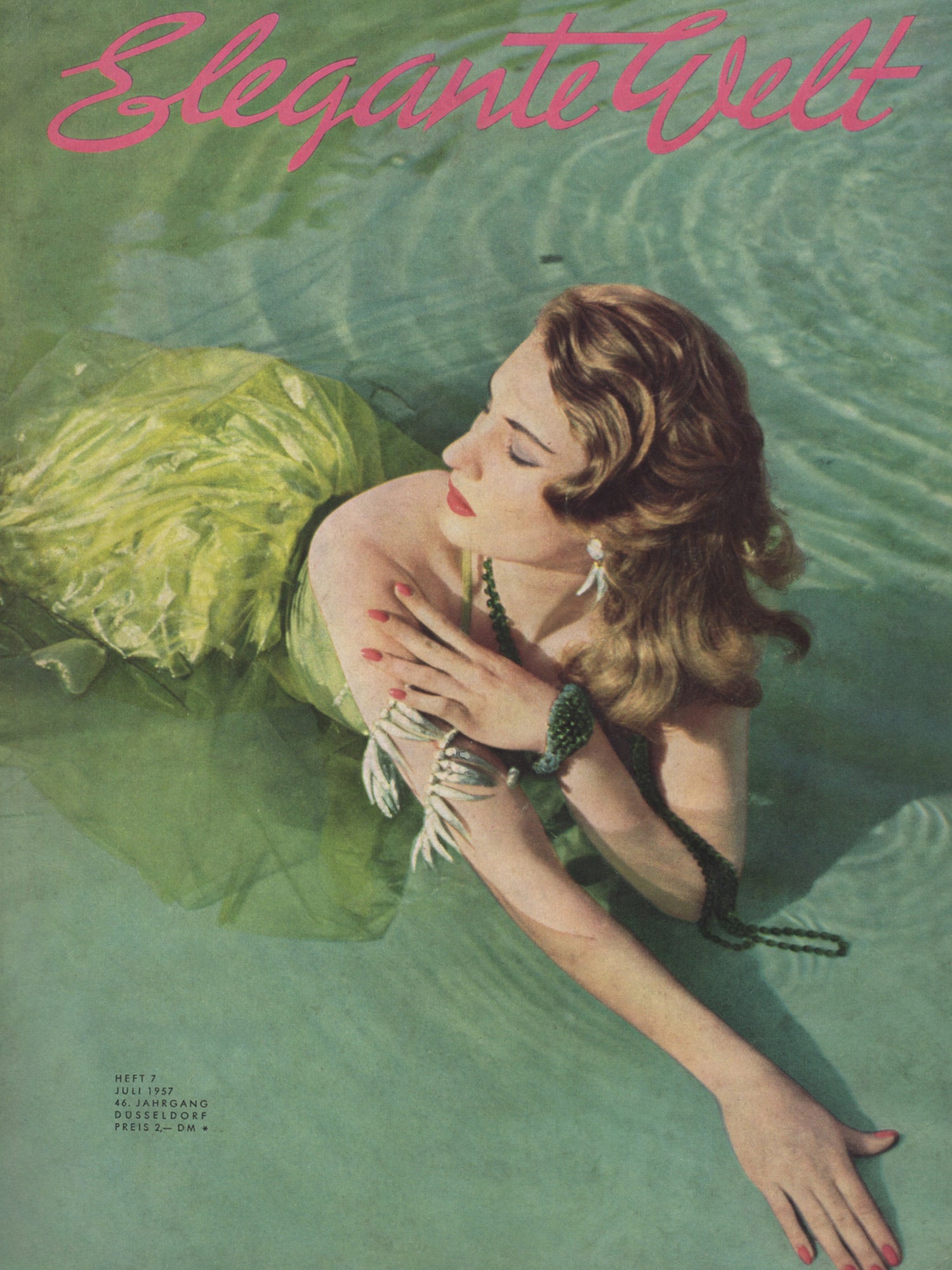
1950
Christian Dior launches the "Ligne Verticale" for his Spring 1950 collection. For Fall, he introduces the "Ligne Oblique," characterized by asymmetrical elements. Lanvin appoints Spanish couturier Antonio del Castillo as its creative director. The brand now operates under "Lanvin-Castillo" until 1962. Italian fashion designer Roberto Capucci opens his atelier in Rome.
1951
Christian Dior launches the "Ligne Ovale" for his Spring 1951 collection. For Fall, he introduces the "Ligne Longue." The first collective fashion show of the "Alta Moda Italiana" takes place in Florence, assembling the most prestigious names of Italian haute couture, such as Fabiani, Sorelle Fontana, Simonetta, Carosa, and Emilio Schuberth.
1952
Christian Dior launches the "Ligne Sinueuse" for his Spring 1952 collection, followed by the "Ligne Profile" for Fall. Hubert de Givenchy opens his couture house. His successful "Separates" debut collection includes the iconic "Bettina" blouse, named after his favorite model Bettina Graziani.
1953
Elizabeth II is crowned Queen of England on June 2. Her richly embroidered coronation gown by British couturier Norman Hartnell, who also designed her wedding dress, weighs 30 pounds and takes 3,500 hours to make. Roger Vivier conceives her coronation shoes with jewel-encrusted heels. He is also appointed designer of bespoke shoes for Christian Dior until 1963. Christian Dior launches the "Ligne Tulipe" for Spring 1953, followed by the "Ligne Vivante" which is also known as "Ligne Coupole" for Fall. Pierre Cardin presents his debut collection. Audrey Hepburn asks Hubert de Givenchy to design the costumes for her film "Sabrina" and becomes the designer's lifelong friend and muse.
1954
At the age of 71, Gabrielle Chanel reopens her couture salon after 15 years and remains true to her timeless style. Although critics accuse her of not having adapted to the fashion zeitgeist of the 1950s (which the designer considers a reactionary nightmare), her costumes sell well. Chanel's rival Elsa Schiaparelli closes her salon. Jacques Fath dies in Paris at the age of 42. His wife Geneviève takes over the business. Christian Dior presents the "Ligne Muguet" for Spring 1954, followed by the "Ligne H" with an unaccentuated bust for Fall. Pierre Cardin presents his sensational "Robe Bulle" characterized by a balloon-shaped skirt. 21-year-old Karl Lagerfeld and 18-year-old Yves Saint Laurent win the Woolmark Prize (Lagerfeld for a canary yellow coat, Saint Laurent for a cocktail dress), and from now on leave their indelible mark on the world of fashion.
1955
Christian Dior introduces the "Ligne A" for Spring 1955, followed by the "Ligne Y" for Fall. To expand the jewelry business, he closes a licensing deal with German manufacturer Henkel & Grosse. Dior also hires Yves Saint Laurent as his creative assistant. Emilio Pucci presents the "La Siciliana" collection.
1956
On April 19, 1956, Grace Kelly weds Prince Rainier III of Monaco in a spectacular dress that goes down in history as one of the most elegant bridal gowns of all time. During her first pregnancy in the same year, she is photographed holding a Hermès handbag to protect her growing belly from the paparazzi - the iconic "Kelly bag" is born. Christian Dior presents his new "Ligne Flèche" for Spring 1956, followed by "Ligne Aimant" for Fall.
1957
Christian Dior presents his new "Ligne Libre" for Spring 1957, followed by the "Ligne Fuseau" for Fall. On October 24, the world is shaken by the designer's sudden death. His young assistant Yves Saint Laurent is named his successor and finds himself the head designer of Dior at age 21. Guy Laroche opens his couture salon in Paris.
1958
Yves Saint Laurent presents his highly anticipated debut collection as Dior's new head designer, introducing the Trapeze line that will become one of the most important dress silhouettes throughout the 1960s. From Spring 1958 until Fall 1960, Saint Laurent will design six collections for Dior. Lucien Lelong, for whom Christian Dior and Pierre Balmain created in the 1940s before opening their own couture salons, passes away. Karl Lagerfeld joins Jean Patou as head dsigner until 1963.
1959
Jules-François Crahay, working for Nina Ricci since 1952, is appointed head designer of the house. He holds this position until 1963, when he succeeds Antonio del Castillo at Lanvin. Pierre Cardin launches his groundbreaking prêt-à-porter collection in collaboration with the Paris department store Le Printemps - and is (temporarily) expelled from the Chambre Syndicale de la Haute Couture.
